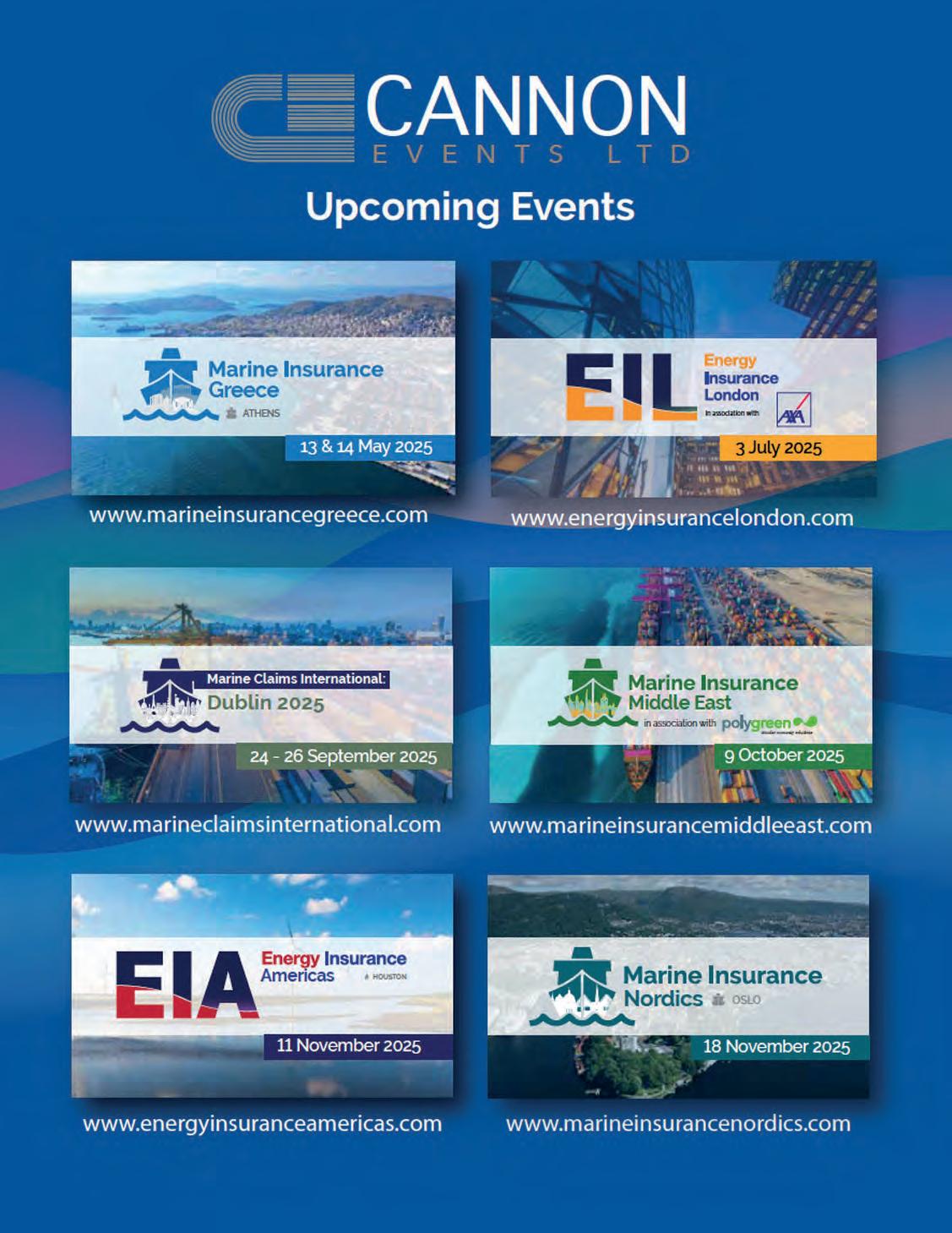The Marine Insurer
MarineSanctions:insurers inaregulatory storm



l Natural catastrophes: Topping the risk list
l Standing firm? Is it time for the market to keep its discipline?
l Recruitment: Need for specialists highlighted
l Ship recycling: Turkey set for boom
l Complex claims: How to navigate a complex claim
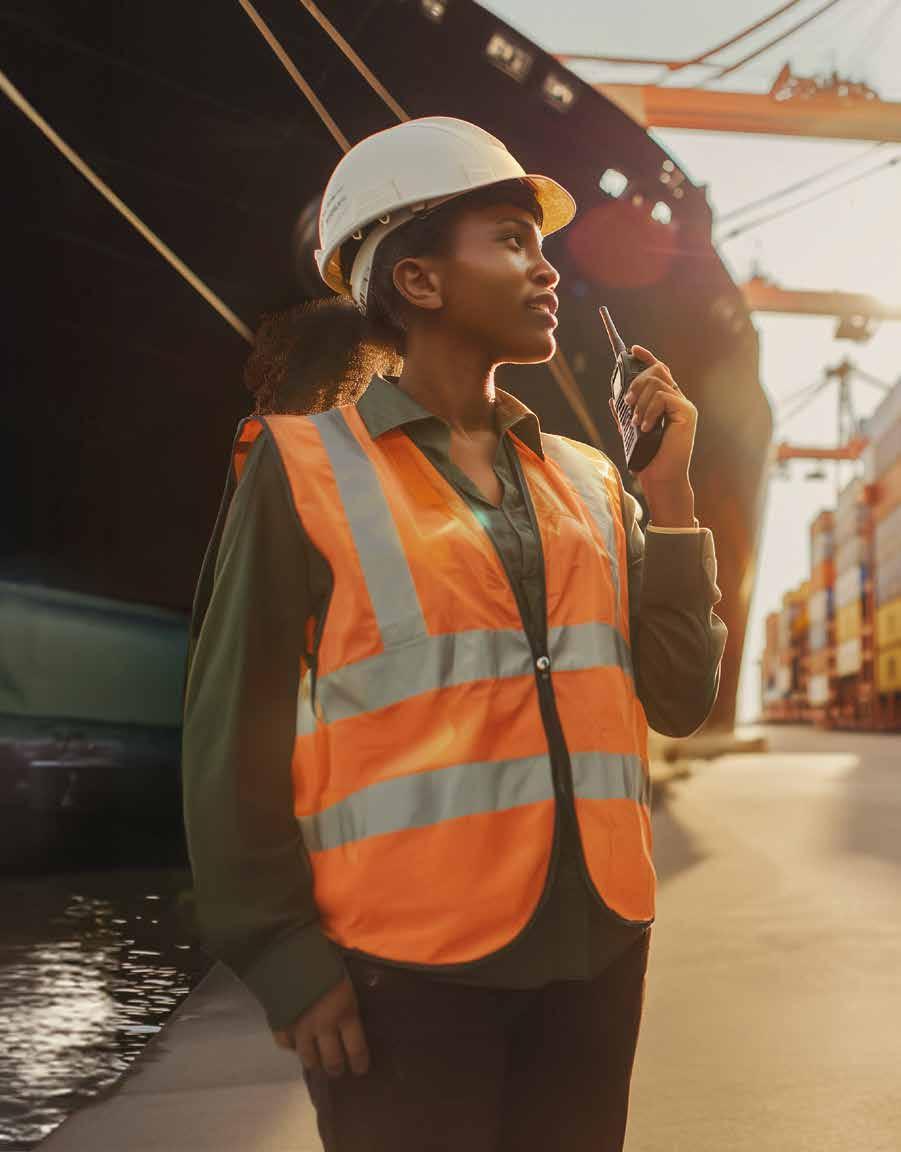

04 Electronic trading
New model terms for electronic bills of lading have been launched in a major fillip in the development of electronic trading
08 Market outlook
Why specialist expertise and discipline matter most in volatile times
10 Marine market conditions
Marine insurance market must stand firm in the face of rising competitive pressures
12 Risk outlook
Nat cats and political risk top agenda for marine and shipping in 2025
16 When risks are special
Expert knowledge and skills are needed more than ever as risks become ever more complex and non-standard
19 Liability claims
The complex and tragic case of the MSC Flaminia shows how challenging and personal such a claim can be
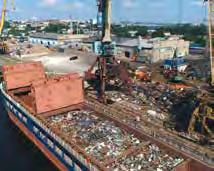
24 Sanctions at sea
Shifting political alliances and new technology will continue to shape the maritime sector and role of marine insurance in the era of sanctions
28 EV fire risk
The burning question: Are car carriers prepared for the electric vehicle revolution?
30 Know your limits
The implications of Réseau de Transport d’Électricité v. Costain Limited & Others [2025] EWHC 73 (Admiralty) and the use of the Limitation Convention
32 Insurance Act 2015
Analysng the implications of a recent UK Court of Appeal decision on the application of the Insurance Act 2015
36 Scrap metal fires
Does the IMSBC code adequately address the risks in the case of scrap metal fires that continue to grab the headlines?
40 Ship recycling
Looking at Turkiye’s ship recycling industry, examining its economic importance and the environmental challenges it faces
44 Alternative fuels
Why existing liability regimes may not be fit for purpose in shipping’s energy transition
48 Crop transit
Explaining the complexities of identifying causes of spoilage in fresh produce transit
2025 is shaping up to be another extremely uncertain year. President Trump has just released a wave of global tariffs –something that will impact the marine trade very directly as economies look to reshape their trade patterns in response. Of course, we have no idea how long or how deep these impacts will be but, for now, it means greater uncertainty for the year ahead. So no wonder that the marine insurance world is looking for dedicated specialists to power their portfolios. That drive for specialists is essential as the sector looks to handle increasingly complex claims. While our example in this issue looks back to the Flaminia, there are plenty of lessons for more recent cases too which, as we have seen, are increasingly complex and require innovation and fresh thinking.
Innovation is also a crucial part of the latest technological advancements. For the marine world, that is about changing centuries of trading practices. Most notable is in the world of bills of lading. Electronic bills of lading (eBLs) have existed for decades however trust in the systems has been slow to build and there have been barriers with, for example, platforms unable to “talk” to each other.
Now the Singapore government is looking to drive through change with new Models Terms and its TradeTrust platform, both of which should give much needed impetus for the wider adoption of eBLs.
Environmental concerns are another area of continual change. This year will see the adoption of new recycling rules globally and Turkey, for one, is excited about the new opportunities those new rules might provide.
However, as Gard explores in this issue, there are also added risks – another opportunity for insurers but also risks that must be factored into pricing, which brings us in a neat circle back to the subject of maintaining market discipline.
Only time will tell what happens to the marine insurance market through the course of 2025 but what is clear a few months in is that we face many of the same challenges but also have plenty of opportunities to grasp.
Enjoy the read!
Liz Booth, Editor, The Marine Insurer
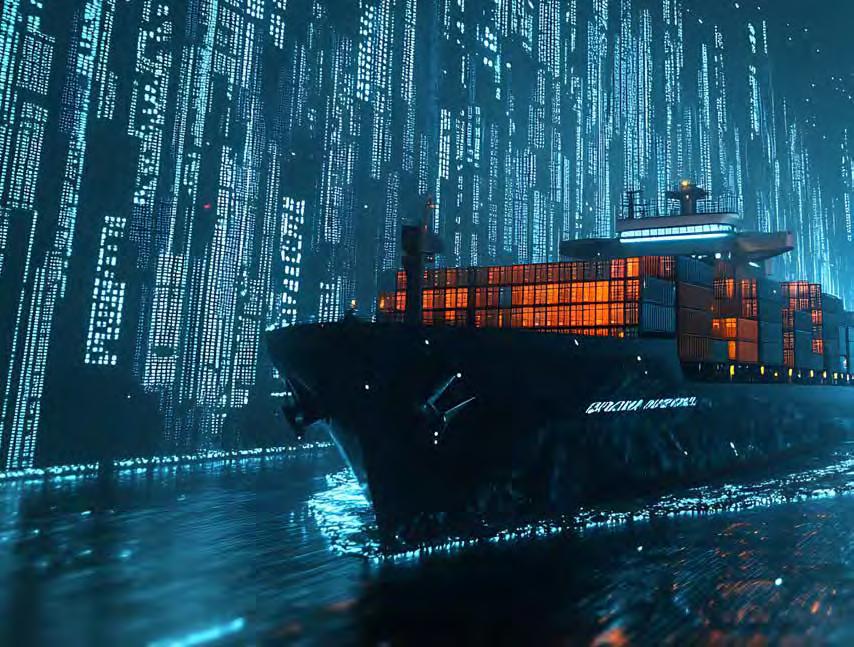
New model terms for electronic bills of lading have been launched in a major fillip to the development of electronic trading, as Liz Booth reports
Bills of lading have been an essential tool in the shipping industry for centuries, enabling global trade to function. However, cumbersome paper-based systems have slowed the process down in a technological age.
The introduction of electronic bills of lading (eBLs) has been met with scepticism by many and they are still far from widely accepted. This is reflected in the results of a survey carried out last year by the Future of International Trade (FIT) Alliance, which found that despite widespread awareness of eBLs, only 21% of bank respondents currently accept them.
The FIT Alliance pointed to a lack of interoperability as causing hesitancy around adoption and further engagement is needed to address those concerns. In recent years the Singapore government has been encouraging the sector to adopt eBLs, culminating in the development of the

TradeTrust framework.
Now, providing a new impetus for eBLs, the launch of TradeTrust’s Model Terms is designed to promote global adoption of the technology, enabling more trade to be managed electronically.
The Model Terms were launched in March, at the Marine Insurance Asia conference, as Singapore’s Infocomm Media Development Authority (IMDA), looks to encourage commercial interests worldwide to embrace new technology to digitalise transferable instruments in an open and interoperable manner.
IMDA has been at the forefront of technical innovation and driving change to electronic form. Among its developments is the TradeTrust framework, which standardises digital trade with enhanced security and legal certainty for the international trade ecosystem. It allows trading partners to create, exchange, verify digitised
documents and transfer ownership for title documents across different digital platforms seamlessly and without a handover point, which solves issues around liability.
The result is that TradeTrust eBLs can operate across multiple systems. It achieves this by using blockchain and cryptographic technologies, adhering to global standards and legal requirements to enable trusted portability of electronic trade documents across digital platforms. IMDA has now added to this proposition by incorporating legal interoperability into the TradeTrust framework.
Electronic documents issued this way can be trusted, interoperable and legally effective across different systems, thereby streamlining and enhancing overall operational efficiency for businesses and governments.
Offered as a digital utility (similar to digital public infrastructure), TradeTrust is open-sourced so that all parties can freely adopt and build on it to benefit their business ecosystem.
The aim is to provide users with both a free tool and the supporting legal structure, to turn your documents into smart electronic documents that are portable across your trading partners, with enhanced security features, all while meeting international standards and legal requirements. By adopting TradeTrust, users can independently:
• issue and revoke electronic documents
• verify documents’ proof of source and authenticity
• transfer performance obligations of transferable documents
TradeTrust eBLs differ from those provided by centralised systems and are aligned with requirements laid out in the Model Law on Electronic Transferable Records (MLETR). This alignment enables legal recognition across different jurisdictions, benefiting trade participants such as
“The Model Terms were launched in March, at the Marine Insurance Asia conference, as Singapore’s Infocomm Media Development Authority (IMDA), looks to encourage commercial interests worldwide to embrace new technology to digitalise transferable instruments in an open and interoperable manner.”
corporates, banks and carriers by improving efficiency and enhancing trust in electronic trade documentation.
Loh Sin Yong, senior principal consultant at the IMDA, stresses that the TradeTrust system does not replace existing platforms but works with them to provide synergy.
“It is a digital public good,” he stresses, “and is designed to eventuate a decentralised system. Key for encouraging global trade is the built-in interoperability, via an immutable public blockchain and free open-source software.”
Providing an example, he said “if you are operating in Singapore and shipping your goods to the UK, you need your e-bills of lading to work in both Singapore and in the UK. However, most platforms are closed networks, making it difficult to operate when just across two closed platforms. With TradeTrust, this challenge is eliminated. Not only is cross-system operation possible – it’s seamless. The receiving platform in the UK can easily accept and process the eBL via the TradeTrust components integrated within it’s own system, with most of the groundwork pre-supplied.
Designed to complement TradeTrust’s open-source software components, IMDA has now launched these Model Terms to provide a mechanism for legal alignment among TradeTrust adopters. This is crucial in a fast changing legal environment where there is an increasing number of jurisdictions aligning themselves to the MLETR. For example, in April 2021 the G7 (including Canada, France Germany, Italy, Japan, the UK and the US) agreed a framework to promote the use of electronic transferable records through adoption of the MLETR.
In October 2021 the G7 Trade Ministers’ Digital Trade Principles were published, which included a statement that “…governments and industry should drive forward the digitisation of trade-related documents”. To date the MLETR has been adopted by only a handful of countries, including Singapore, Abu Dhabi and Bahrain. Loh Sin Yong also referred to Singapore Electronic Transactions (Amendment) Act 2021 and the more recent UK’s Electronic Trade Documents Act 2023 as legislative steps supporting the broader adoption of electronic instruments. Interest is growing, for example with the French National Assembly adopted MLETR on 5 June 2024, adding France to the list of countries/jurisdictions to adopt this model law.
Another essential consideration in the launch of Model Terms and eBLs, is the approval of the International Group of P&I Clubs (IG) and symmetry with their rules. As the key functions of bills of lading relate to the receipt, transfer of title and evidence of contractual terms for the carriage of cargo by ocean-going vessels, these documents are central to risk management of potential carrier liability to third parties for loss or damage to cargo. Carriers insure this risk through P&I, through membership of P&I Clubs, who are part of the IG. Between the 12 P&I Clubs which comprise the IG, they
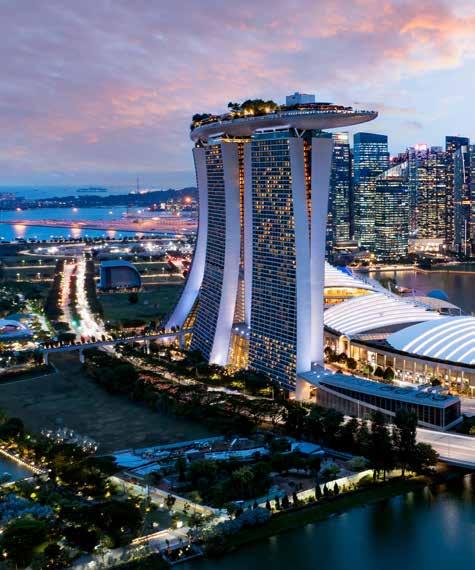
“if you are operating in Singapore and shipping your goods to the UK, you need your e-bills of lading to work in both Singapore and in the UK. However, most platforms are closed networks, making it difficult to operate when just across two closed platforms. With TradeTrust, this challenge is eliminated. Not only is cross-system operation possible –it’s seamless. ”
Loh Sin Yong IMDA
provide P&I coverage for approximately 90% of all global ocean-going tonnage.
As independent, not-for-profit, mutual insurance associations, each will sign up to “Club Rules” sharing large loss exposures. Club Rules for liability with respect to cargo include requirements for all bills of lading issued by members to contain certain legal exclusions from and limitations of
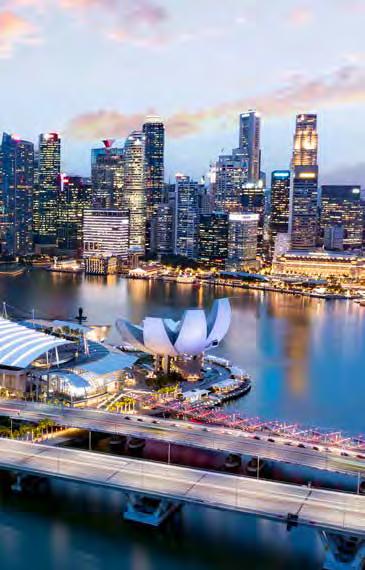
liability and other provisions which mitigate risks of claims by, and liability to, third party claimants for loss or damage to cargo.
The IG supports the transition from paper bills of lading to eBLs and sees many benefits. However, such systems have been required to undergo an IG approval process. To gain that approval, eBL systems must
o Comply with laws recognizing eBLs as equivalent to paper bills.
o Provide evidence of contract of carriage terms.
o Have system functionality for transfer rejections and accomplishment.
o Have system provider’s liability coverage for failures.
“Just as the TradeTrust framework provides a technical solution to interoperability through its technology components, the Model Terms provide a legal solution to interoperability,” Loh Sin Yong said. “The Model Terms establish a clear legal foundation that facilitate TradeTrust eBLs to be supported by IG P&I insurance cover and are legally transferable across jurisdictions. This combined technical and legal approach strengthens confidence and reliability in the use of electronic trade documents.”
There are three constituent parts to the Model Terms:
• Part A – Definitions
• Part B – User Agreement Terms and Conditions
• Part C TradeTrust eBL provisions
Looking in more detail at each of the parts:
Part A – Definitions
Definitions for the key parties involved in the eBL/traditional BL lifecycle, including the carrier, consignee and shipper.
Other important definitions:
i. “TradeTrust eBL” – ensures that the TradeTrust eBL captures the mandatory user agreement clauses from Part B of the Model Terms.
ii. “TradeTrust Enabled eBL System” – affirms the integration of TradeTrust software and incorporation of the Model User Agreement and eBL Terms.
iii. “TradeTrust Software” – makes clear that the TradeTrust software developed by IMDA is free and opensource and is made openly available to the public via the TradeTrust website.
Part B – User agreement terms
eBL CLAUSING: protection for carrier
REJECTION OF THE eBL: International Group requirement, commercial reality
SWITCH TO PAPER: eBL made inoperative and ceases to have any effect or validity
SURRENDER, DELIVERY AND ACCOMPLISHMENT: surrender vs accomplishment
LIABILITY : criteria (e) of IG streamlined approval process
DISPUTE RESOLUTION: SIAC (Singapore International Arbitration Centre) and SCMA (Singapore Chamber of Maritime Arbitration).
Part C – eBL terms
NOTICE: compliance with the MLETR
CARRIER’S RIGHT TO RECEIVE BACK: protection for carrier;
SWITCH TO PAPER: paper bl to contain same rights and legal effect as precedent TradeTrust e-BL;
SURRENDER, DELIVERY AND ACCOMPLISHMENT: carrier’s right to request identification; and DISPUTE RESOLUTION.
Though the eBL remains IMDA’s primary focus, the principles outlined in the Model Terms could also be adapted for other types of electronic transferable records (ETRs) recognised by law, such as electronic promissory notes, bills of exchange, warehouse receipts and any future MLETR-aligned instruments. The Model Terms are intended to serve as a baseline reference and not meant as a comprehensive set of terms set out for service providers/ systems.
Loh Sin Yong concluded “These Model Terms will help in overcoming existing concerns relating to the interoperability of different platforms in decentralised ETR systems. It also leads to simplifying technical (and legal) concepts and should help drive change towards mass adoption of ETRs.”


Helen Steadman , global head of cargo, AXIS, explains why
specialist expertise and discipline matter most in volatile times
In a dynamic risk environment in which many newsworthy events have a marine cargo ‘angle’—whether it is a warehouse engulfed in wildfire, Middle East conflict, a terror attack, or a sinking ship—our instinct as underwriters when a new headline appears is to reach for our laptops and hammer the details into our systems.
Through information garnered from our data, or a switchedon claims colleague or broker partner, within minutes, we start the complex process of identifying affected parties and overlaying this with our own portfolio, to determine whether we are on risk or to what extent.
Summarising this vital information in a single sentence, ready to relay almost instantaneously, is par for the course for the marine underwriter who needs to act with speed, ready to address enquiries and pre-empt the call from above and that inevitable question: Is it one of ours?
Sitting at your box at Lloyd’s or, more often the familiar surroundings of the open-plan office or desk at home, it is possible to appear insulated from the world’s crises even as they lap shores increasingly close to home.
However, for London cargo underwriters, myself included, mapping the effects of turbulent geopolitics and disruptions to global trade, and working with market peers to create responsive, flexible solutions, is built into our working lives.
We read and absorb risk reports and work closely with our claims specialists who, through their daily conversations, are closely tuned into the realities outside.
As underwriters, our discussions with brokers and insureds on the fresh challenges they are navigating every day help us to hone our appetites, pricing and terms nd conditions to meet increasing or decreasing levels of risk as we see it and elevate the solutions we deliver.
Site visits in our line of work are as valuable in building a picture of the evolving risk landscape as the data at our fingertips. Access to useful data is improving all the time— helping to monitor accumulation risk, while recognising the complexities involved with tracking goods in transit.
As we remind colleagues in adjacent lines of insurance business, storage units, also covered by cargo, are inherently easier to trace than their contents, which, as soon as it is on the move, may encounter myriad risks along their trade routes, from war and terror acts to new tariffs or sanctions, to weather-related diversions.
For the seasoned cargo underwriter, today’s disruptions are truly unprecedented, even five years on from a pandemic that triggered a near total shutdown in global trade. How else do you describe the current unpredictable world defined by economic instability, climate change, and the erosion of decades of geopolitical norms? We are all operating under the assumption that normality may not resume any time soon—we know this and our underwriting ought to reflect this.
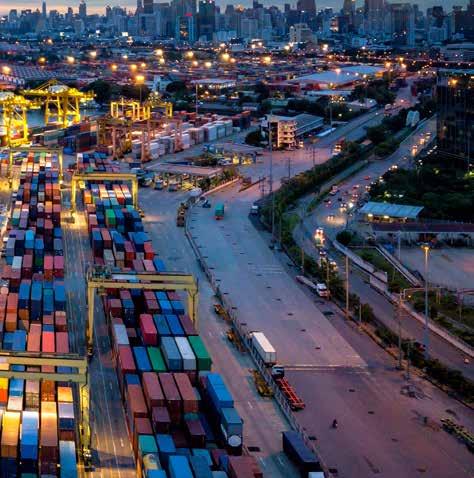
The challenges in the market arrive thick and fast. It remains as important as ever that, as a market, we continue ‘pricing in’ the unpredictability of the geopolitical and economic climate to our underwriting decisions. As a specialty market, we excel in providing solutions in volatile times and this responsiveness is key to our success.
There is no cause to relax on rate or terms and conditions
“For the seasoned cargo underwriter, today’s disruptions are truly unprecedented— even five years on from a pandemic that triggered a near total shutdown in global trade. How else do you describe the current unpredictable world defined by economic instability, climate change and the erosion of decades of geopolitical norms?”
because the cargo market has been relatively cushioned from the impacts of the volatile environment. Unlike when the giant curveball of Covid-19 changed our market, there is no let-up in activity and therefore claims amid today’s uncertainty.
It is not so long ago that the London market experienced the Decile-10 years, a process under which all syndicates had to identify their poorest performing portfolios of business (the Decile 10) and demonstrate plans to return the portfolio to profit. It is questionable whether any underwriter would risk stepping back to those ill-disciplined times and undo the gains enjoyed by the marine market in particular from that process.
Following a sustained period of rate resiliency post-Decile 10, we are seeing single-digit rate deterioration in 2025. As new capacity continues to flow in and the market’s bifurcation into lead versus follow continues, market incumbents need to lead by example in showing discipline and foresight to ensure these signs of softening do not lead us into escalating unprofitability and weakening terms and conditions.
We believe there is a fine line that we ourselves are treading between necessary market modernisation through increased portfolio underwriting and facilitisation that add value and efficiency for all and investing in maintaining strong and differentiated leaders in the open market.
We cannot stop the major losses—fires, trade wars, terror attacks—that we are here to respond to. But we are capable through discipline and foresight of minimising the selfinflicted wounds caused by a race to the bottom on rate and terms. And if a stick were needed, Lloyd’s has made it clear in recent statements that it will not tolerate a slide backwards in underwriting standards that would risk dragging a market segment back into unprofitability.
Another piece of the puzzle in building a sustainable cargo market that is future proofed against the next twists and turns of global trade and geopolitics is investing in our people. With 25-plus years’ experience, I have worked through previous market cycles and developed a long-term view of how the cargo market responds to and withstands world events. It is incumbent on experienced underwriters to take the training and development of newer underwriters seriously.
We are cognisant of the deep competition for talent in the London market and, as line sizes increase, cargo teams need to attract and retain engaged, up-and-coming underwriters who can ensure the market retains its edge as a home for challenging, complex and specialty risks. Curiosity and passion cannot be taught but a disciplined, flexible, informed approach to specialty underwriting can be modelled and learned.
Our purpose in developing elevated, specialty solutions to meet the evolving needs of customers is best fulfilled when we work together in our common interest. This must be founded on price adequacy, fairness and service for customers and informed underwriting to build a strong, sustainable market in which we learn from the past and prepare for a turbulent future.

Mike
Burle , head of marine
and
deputy
active underwriter, Liberty Specialty Markets, argues that the marine insurance market must stand firm in the face of rising competitive pressures in what remains a highly volatile market
The last seven years has been a period of remediation for the marine insurance market. Efforts market-wide gradually restored books to profitability, which was a considerable task for most and a real struggle for many.
Yet the marine market pulled together and, certainly in London, Lloyd’s Decile 10 project launched in 2018 to bring underperforming syndicates and classes of business back to profitability, helped accelerate this process, instilling the discipline required to create portfolios that consistently perform well across the cycle.
These efforts eventually yielded results not seen in the marine market for more than a decade. In March 2024 Lloyd’s results revealed just how good a position the market was in, with other markets also performing strongly.
However, despite this, or some may argue because of it, recent renewal cycles suggest marine rates are once again starting to soften.
While the triggers, context and circumstances are different for every soft market, there are usually some fundamental similarities. This time, however, is arguably different for several notable reasons, not least the precarious geopolitical situation and ongoing global economic fragmentation.
The increase in natural catastrophe exposures, such as earthquake, windstorm and flood – even tornados and wildfires – are happening in places, at times and on a scale insurers were not expecting.
This is also a period of market bifurcation, where certain placements are placed through market facilities, with marine an already fairly facilitized market. There has also been the emergence of auto-follow facilities, with a whole array of new propositions dominating headlines in recent times. These, among many other factors, are putting pressure on every risk that insurers see in the market.
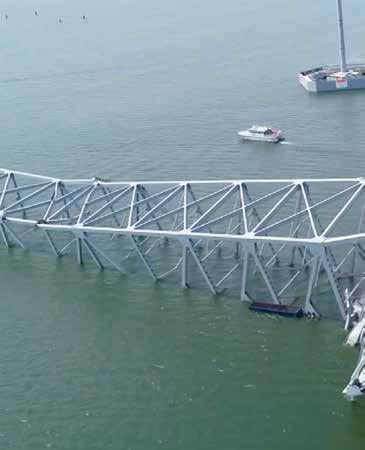
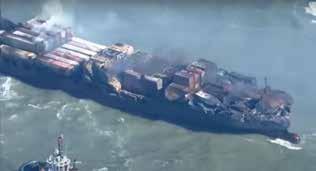
Following several consecutive years of rate increases, client fatigue is a further factor, with discounts now being sought placing extra pressure on insurance renewals. The profitability of Lloyd’s and other markets has been cited by brokers when seeking client discounts.
While some may argue we’ve got it too good, this overlooks the fact that any market is only ever one or two losses away from a dramatic change of fortune. Any insurer should be able to command a fair return for the risks it accepts to ensure that it is economically sustainable and can continue to meet client needs.
Also, while the marine market may be profitable right now, this is finely balanced. In some areas margins appear slim, such as marine hull, which as a standalone class of business has struggled for consistent returns. The last 12 months have also seen significant losses affect the market, with the Baltimore bridge allision a further stark reminder of the potential for outsized marine losses. This was followed more recently by the collision between MV Solong, the Portuguese-flagged cargo vessel, and MV Stena Immaculate, a tanker transporting jet fuel for the US military, in the North Sea an incident that analysts estimate would cost the marine insurance market up to $300m at the time of writing.
Due to the ongoing geopolitical situation, ship operators continue to face a broad range of challenges across vast areas. In the Red Sea, the threat of vessels being attacked by Yemen’s Houthi rebels remains very real.
Media coverage of these attacks has declined significantly over the past six months yet, paradoxically, Houthi activity in the Red Sea actually intensified over that period. With more than 100 Houthi attacks in the region since November

2023, many vessels now routinely take the route around the Cape of Good Hope; a lengthy detour of around 3,500 nautical miles.
In addition, the Black Sea remains a militarized zone, given the ongoing Russia-Ukraine conflict, with naval blockades, missile strikes and drone attacks posing a serious threat. Both countries have deployed naval mines, some of which have become unanchored and drifted, creating a further hazard for vessels.
In the Persian Gulf, ongoing tensions between Iran, the US and Gulf States brings the heightened risk of naval confrontations, missile attacks and military escalations. Iran has previously seized or harassed commercial vessels, particularly in the chokepoint of the Strait of Hormuz.
Simultaneously, in the US Midwest, the footprint of “tornado alley” is consistently growing, with losses already
“Any market is only ever one or two losses away from a dramatic change of fortune. Any insurer should be able to command a fair return for the risks it accepts to ensure that it is economically sustainable and can continue to meet client needs.”
incurred relating to tornados and storms affecting large US warehouses and distribution centres.
All of these examples highlight the imminent possibility of a tectonic occurrence in the marine market. Preserving both a sufficient pool of premium and underwriting discipline is essential to its sustainability and ability to protect clients for the long term despite heightened volatility.
In 2015/16, a series of large losses occurred at a time of excess capacity and low rates, with a number of organisations aggressively looking to grow, creating the perfect storm. Those who remember that period have no desire to relive what was necessary to correct the marine market after it was allowed to drift so dramatically off course.
This remediation work and the lessons learned from that time helped create the disciplined, profitable and robust marine market of today. This hard-won position not only deserves to be preserved but built on requiring collaboration at an industry level and some restructuring at an individual business level.
For example, silos still exist within many insurance companies, hampering interaction and collaboration between departments. Given the risks and uncertainties facing clients, fostering greater organisation-wide collaboration, through closer stakeholder alignment and integration of business units, is one of the most important steps insurers can take to support clients in meeting these challenges.
At Liberty, underwriters, risk engineers and claims specialists sit and work together on a weekly basis, ensuring much greater knowledge sharing and therefore better risk mitigation. It has helped produce more insightful terms and conditions, coverage and a better product for the client. Additionally in claims, the ingenuity generated by closely collaborating, multidisciplined teams has enabled clients to achieve satisfactory outcomes far faster.
This is therefore a pivotal moment for the marine market, which begs an important question: Will insurers, through initiatives such as these, continue to build, become more sophisticated and resilient, or will the opportunity to avoid a race to the bottom be squandered? My hope is the market will prove itself better than that and, remembering the lessons of the recent past, hold its nerve and press ahead in its pursuit of excellence.

Capt. Randall Lund , MBA, NAMSCMS, senior maarine risk consultant, Allianz Commercial reports on the findings of the insurer’s latest Risk Barometer and evolving risk perception among professionals within the maritime sector
Cyber incidents such as data breaches, ransomware attacks, and IT disruptions are the biggest business risks for companies globally in 2025, according to the latest Allianz Risk Barometer. Business interruption ranks as the second top concern for companies of all sizes followed by natural catastrophes.
Now in its 14th year, the Risk Barometer is an annual business risk ranking incorporating the views of 3,778 risk management experts in 106 countries and territories including CEOs, risk managers, brokers and insurance experts.
The Risk Barometer also surveyed marine and shipping risk experts to identify the threats keeping them up at night. Following is a review of the top industry risks for 2025, as voted for by the respondents.
Tied for first place by marine and shipping respondents are natural catastrophe activity and political risks. Some 29% of industry respondents cited these risks as their top concern for 2025, with natural catastrophes up from the second spot last year.
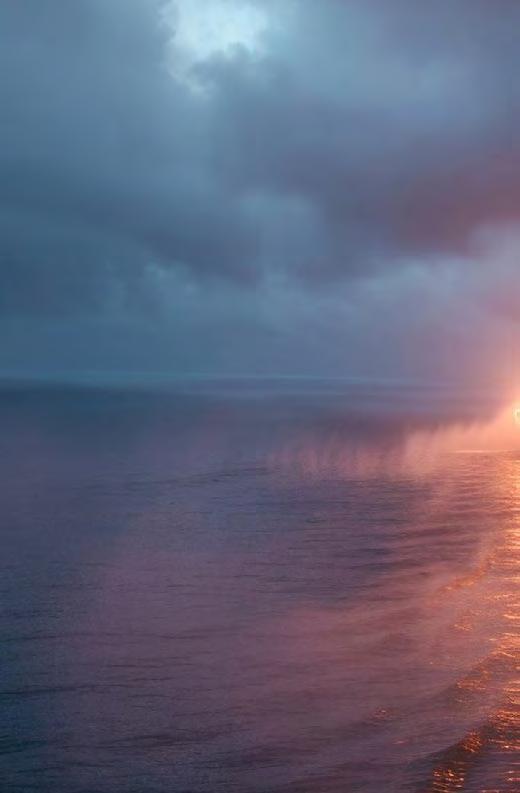
Natural catastrophes were the fifth biggest cause of marine insurance claims, by frequency and severity for a five-year period analysed by Allianz Commercial.
Extreme weather and natural hazards have contributed to a number of large losses in the past, with the loss of vessels and damage to cargos. Extreme weather was a contributing factor in around a third of the total vessel losses reported in 2023 alone, while drought in Europe and the Americas has caused major disruption to shipping and supply chains in recent years.
While political risks and violence surprisingly declined in the latest overall global rankings of the Allianz Risk Barometer across all industries, it rises from the third spot in 2024 among marine and shipping respondents.
Recent incidents, such as in the wake of the conflict in Gaza, have demonstrated the increasing vulnerability of global shipping to proxy wars, disputes and geopolitical events, with many ships having been targeted in the Red Sea and elsewhere by Houthi militants in response
“According to Allianz’s 2024 Safety and Shipping Review, there were more than 200 fire incidents (205) reported on board vessels over 100 gross tonnage (GT) during 2023, the second year in a row that this total has been exceeded – after a decade high of 211 in 2022.”
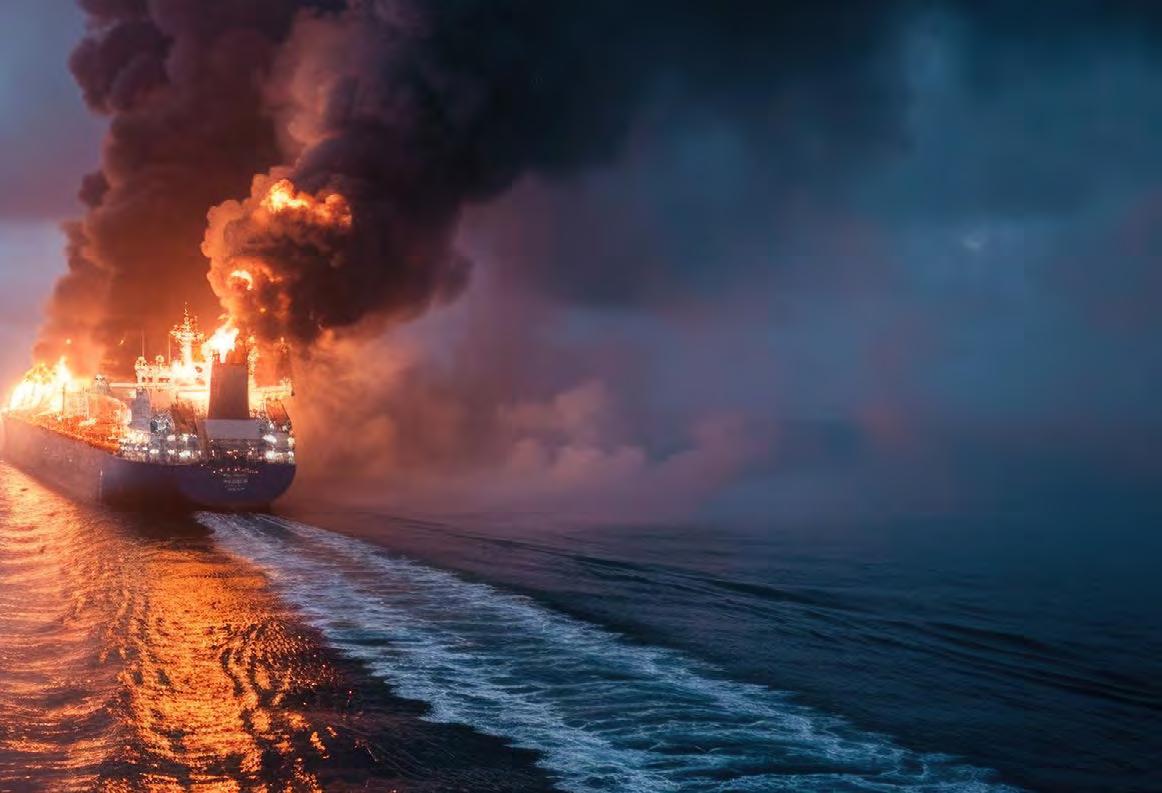
to the conflict.
Disruption to shipping in and around the region has persisted. Both the war in Ukraine and the Red Sea attacks have also revealed the increasing threat to commercial shipping posed by new technology, such as drones, which are relatively cheap and easy to make and difficult to defend against without a large naval presence.
Looking to the future, more technologically driven attacks against shipping and ports are also a distinct possibility. Reports of vessels experiencing GPS interference have also increased particularly in the Strait of Hormuz, the Mediterranean and the Black Sea.
A new entry to the marine and shipping risk rankings yearon-year is theft, fraud and corruption with 26% of industry respondents ranking this a top concern in 2025.
Allianz Commercial has seen an uptick in cargo theft incidents in recent years, particularly in transportation and logistics. In North America, the number of theft claims has increased in recent years, with a 20% increase reported in 2022.
The current economic environment, and cost of living crisis, means there is a much greater incentive to steal. While theft of high value cargo has increased, more and more goods are becoming attractive to criminals that were not before, such as food and household goods.
At the same time criminals are using more organized methods to gain access to cargo, often employing technology. For example, thieves exploit cyber security weaknesses to impersonate a trusted supplier or gain access to systems to facilitate theft or divert shipments. Criminals may also use jammers to interfere with cargo GPS tracking devices and mobile telephone signals, making it harder to recover stolen goods.
Another major risk that was identified is climate change, including physical, operational and financial risks as a result of global warming. 2024 was another year of extreme weather and new climate records. Last year was the hottest year on record. It was also the fifth year in a row in which insured losses from natural disasters worldwide exceeded
the $100bn mark. It is little surprise then that climate change delivers a standout result in 2025.
Shipping contributes around 3% of global emissions caused by human activities, and the industry has committed to tough targets to cut these. Reaching these targets requires a mix of strategies, including measures to improve energy efficiency, the adoption of alternative fuels, innovative ship design and methods of propulsion.
Top 5 risks in Marine and shipping
Source: Allianz Commercial
Figures
Decarbonisation presents various challenges for an industry that is juggling new technologies alongside existing ways of working. For example, the industry will need to develop infrastructure to support vessels using alternative fuels, such as bunkering and maintenance, while at the same time phasing out fossil fuels. There are also potential safety issues with terminal operators and vessels’ crew handling alternative fuels that can be toxic or highly explosive.
Respondents: 86
Figures don’t add up to 100% as up to three risks could be selected NEW New entry in the top 5 risks
There has been a renewed focus on climate change risk management post-Covid-19 after this peril dropped down the ranking during the pandemic years as companies dealt with more immediate challenges.
The top three actions that companies are taking to mitigate the direct impact of climate change according to respondents are: Adapting or increasing insurance protection (including alternative risk transfer); Adopting carbonreducing business models (eg recycling and reducing waste, encouraging sustainable travel, developing more sustainable supply chains); and creating contingency plans for climaterelated eventualities (eg response and recovery, assessing critical systems and resources).
Fire and explosion risk dropped from its number one spot last year for the industry to tie in fourth place with climate change at 22% of marine industry respondents.
According to Allianz’s 2024 Safety and Shipping Review, there were more than 200 fire incidents (205) reported on board vessels of more than 100 gross tonnage (GT) during 2023, the second year in a row that this total has been
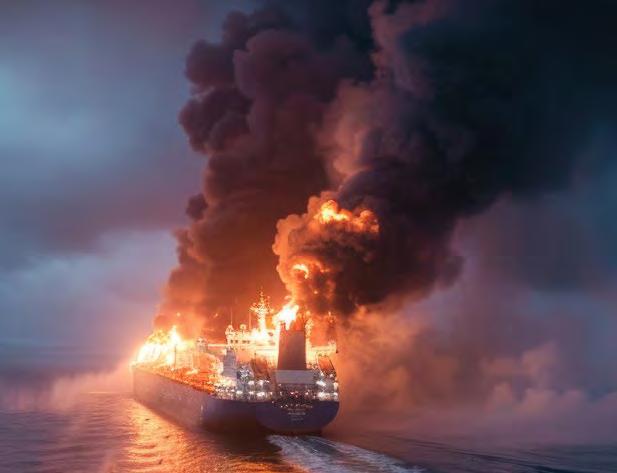
Political risks and violence (eg political instability, war, terrorism, coup d'état, civil unrest, strikes, riots, looting)
Figures represent how often a risk was selected as a percentage of all responses for that industry sector Respondents: 86
Figures don’t add up to 100% as up to three risks could be selected NEW New entry in the top 5 risks
Source: Allianz Commercial
exceeded – after a decade high of 211 in 2022.
Fire remains a major cause of loss for large vessels and recent years have seen several major fires involving Roll On-Roll Off (Ro-Ro) vessels and car carriers.
Ro Ros can be more exposed to fire and stability issues than other vessels due to the nature of their cargo and their design. Incidents have coincided with the ongoing debate about the fire risks of transporting electric vehicles (EVs) powered by lithium ion batteries.
Several Ro Ro ferry and car carrier operators have taken a cautious approach to transporting EVs while insurers have highlighted additional risks associated with lithium ion batteries, as well as the need to upgrade firefighting capabilities of Ro Ros accordingly.
The transportation of consumer goods, such as e scooters, that contain lithium-ion batteries is still not as good as it needs to be. Employees need to be trained to recognise possibly damaged, or suspect batteries.
“Allianz Commercial has seen an uptick in cargo theft incidents in recent years, particularly in transportation and logistics. In North America, the number of theft claims has increased in recent years, with a 20% increase reported in 2022.”
In addition, all parties (suppliers, shippers, third party transporters, carriers, vessel crews and port and terminal workforces) must also be trained and drilled in the protocols that their employer should develop in the case of an incident or the discovery of a suspect battery.
As industry and regulatory standards continue to evolve and be implemented, and technical solutions that could reduce the impact of any fire emerge, there is a benefit in supply chain transporters being proactive in this way, even though it may not yet be required by the various governing regulations. The cost of training will be infinitesimal compared to the cost of any major incident involving lithium ion batteries.
To read the full 2025 Allianz Risk Barometer, please visit: https://commercial.allianz.com/news-and-insights/reports/ allianz-risk-barometer.html
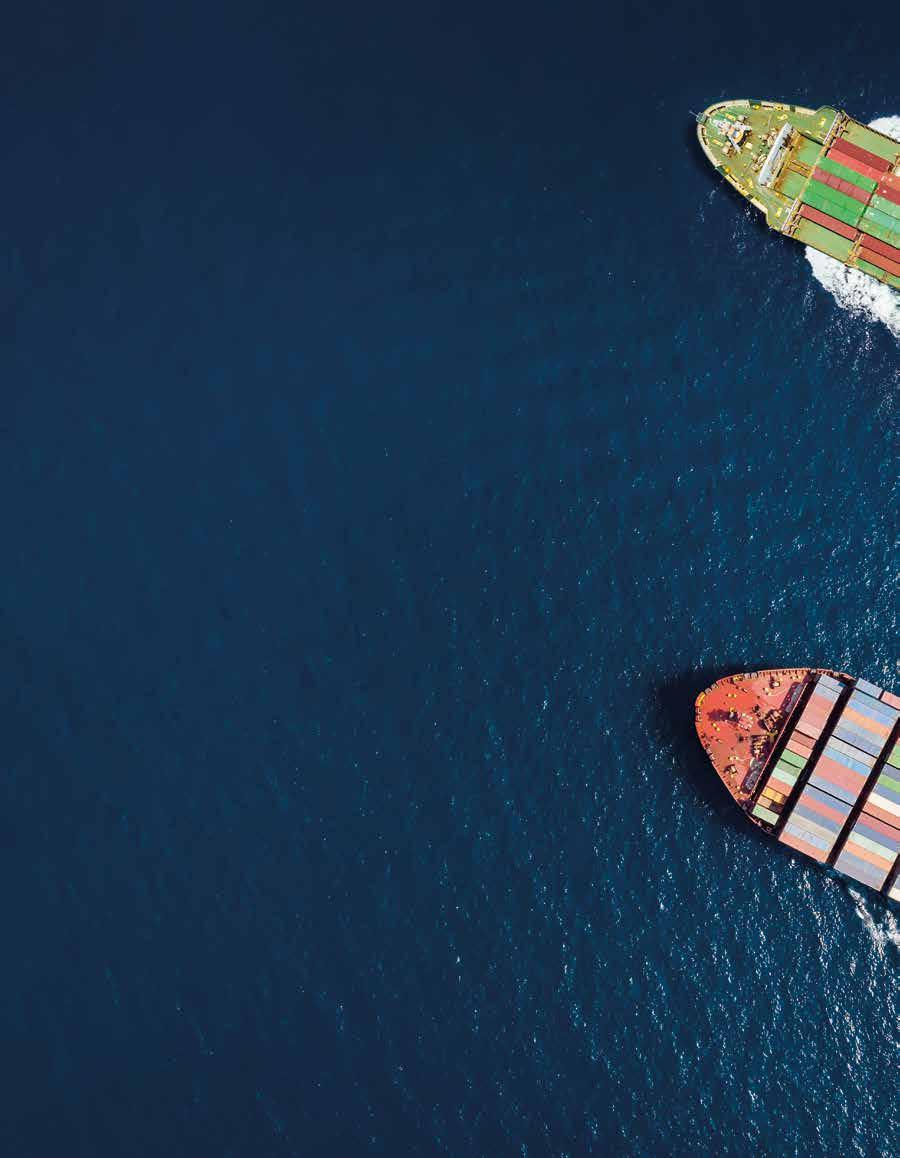
The Hiscox London Market Marine, Energy and Specialty division blends Hiscox’s underwriting expertise and heritage with our Lloyd’s roots stretching back to 1901.
Alongside the ability to underwrite traditional risks, our empowered teams of underwriters, claims and policy wordings specialists also welcome the opportunity to look at new risks and develop innovative products where we feel we can offer a genuine difference for our clients as long-term, trusted partners in risk.
Find out more at hiscoxlondonmarket.com.

Alberto Comitardi (head of special risks) and Gian Piero Priano (right)(global head of claims) at Cambiaso Risso Marine explain why expert knowledge and skills are needed more than ever as risks become ever more complex and non-standard
What does “special” mean? In the world of insurance, the term “special risks” refers to unique and often complex risks that do not fall under standard insurance categories. These risks require specialised knowledge and tailored solutions to ensure adequate coverage and protection.
Special risks encompass a broad spectrum of scenarios that are not typically covered by conventional insurance policies. These risks can arise from various sources, including natural disasters, political instability, cyber threats and new maritime operations never insured before (eg carbon capture and transportation, desalination activities, hydrogen propulsion performance).
When speaking about events such as earthquakes, hurricanes, floods and wildfires, from a marine perspective we are mainly speaking about ports and terminals.
Ports are often exposed to events that can cause damage to properties and infrastructures on a vast scale, leading to substantial financial losses. Insurers must assess the likelihood and potential impact of such events to provide appropriate coverage.
Even if not of a natural origin, political instability, including acts of terrorism, war and civil unrest, pose significant challenges for businesses operating in volatile regions and expose them to large-scale losses over a vast region.
As we are living in a time of uncertainty, it is no surprise that, cyber insurance excepted, in recent times one of the most called on special risks insurance in the shipping industry is “marine trade disruption”.
This cover is designed to protect a company’s earnings against events that affect the entire supply chain. Unlike standard loss of hire insurance, which covers marine perils and loss due to physical damage to the vessel and the earnings of a single vessel, trade disruption insurance extends to many other external sources of interruption that are outside the control of the ship manager.

It is possible to combine trade disruption insurance with the loss of hire and delay cover for maximum protection. Earnings protection supports payment of loan interests and increases the ability of a company to attract finance.
Further, the increasing reliance on digital technologies has made cyber threats a major concern for any business. Cyber risk insurance covers losses resulting from the inability to operate data, be it from cyber-attacks or other digital threats. Companies operating on a liner basis, be it a container or cruise ships, are among the most exposed. These companies deal with millions of pieces of information and can conduct business solely relying on digital tools. Any situation that deprives them of access to their data causes immediate disruption and data breach exposes them to costly investigations by regulators.
Bearing that in mind, it is pivotal to be aware of which insurers have more experience and appetite to insure business interruption losses affecting the supply chain (container lines) compared to those insurers that have built a reputation in handling GDPR (General Data Protection
“The evaluation of special risks calls for extensive data analysis from the very start. Insurers rely on advanced modelling techniques, historical data, and expert analysis to evaluate these risks effectively. Implementing proactive measures to reduce the likelihood and impact of special risks is the differentiating factor.”
Regulation) and privacy breach exposures and regulatory claims (cruise lines).
Among the most innovative solutions, we can then consider forms of “technology performance insurance” in respect of new propulsion systems. New technologies, such as hydrogen marine propulsion systems, may simply not work as expected but there is no associated physical loss to compensate. Technology performance insurance can protect against financial losses suffered when the technology fails to meet performance standards.
The evaluation of special risks calls for extensive data analysis from the very start. Insurers rely on advanced modelling techniques, historical data and expert analysis to evaluate these risks effectively. Implementing proactive measures to reduce the likelihood and impact of special risks is the differentiating factor.
Measures include advanced security systems, diversifying the supply chains and developing comprehensive disaster recovery plans. Coordination with risk engineers and continuous monitoring of risk factors becomes essential to keep potential threats under control and maintain insurability at competitive rates.
A further challenge is the customisation of insurance policies to address the specific needs and exposures of each client. This requires a deep understanding of the client’s operations and the risks that they face. Therefore, only insurers that are willing to work closely with their clients can understand their unique exposures and be willing to design policies that provide the relevant, comprehensive coverage.
On 19 July 2024, a single content update from CrowdStrike, a cyber security software company, caused more than 8.5 million systems to crash. The disruptive effect extended to thousands of organisations worldwide resulting in losses estimated to be more than $5bn, possibly approaching $10bn.
Air transportation, railways and mass transportation systems were the most affected in the transport industry with old fashioned shipping showing some natural resilience, mostly due to the way bulk shipping is traded. Insured losses amounted primarily to lost revenues insured under the business interruption section of the cover and associated costs, either as additional working costs or data restoration costs.
The disruption did not originate from a hacker attacking the system. It was a pure system failure experienced by a new version release of the CrowdStrike software. As the CrowdStrike software is one that protects against attacks, the software is authorised to access and block the systems that it protects. And that is essentially what happened, with the IT of companies scrambling to regain the operativity of their networks to prevent disruption to the business and revenues.

“On 19 July 2024, a single content update from CrowdStrike, a cyber security software company, caused more than 8.5 million systems to crash. The disruptive effect extended to thousands of organisations worldwide.”
The result was a recovery of the operativity of the affected networks in less than 24 hours, without triggering significant actual losses.
Cyber insurance currently protects against cyber risks at large be it originating from a cyber-attack or “natural” system error. Further, cyber insurance is essentially a business interruption insurance.
What however is not always clear is whether the wording of any given cyber insurance includes, as a trigger, the inability of a key vendor to operate. That is generally defined as a form of contingent or dependent business insurance.
That trigger of cover is not always included, it may refer only to cyber-attacks and may have to be negotiated with the insurer. Outages of a third-party vendor, such as CrowdStrike, could have resulted in a dangerous gap in cover. Ensuring that risks are appropriately insured under appropriate wording is a challenging task that we face every day.
Special risks represent a significant challenge that requires specialised knowledge and tailored solutions. By understanding the nature of these risks, assessing their impact and implementing effective risk management strategies, companies can protect themselves against potential losses and ensure business continuity. As the world continues to evolve, staying vigilant and proactive is essential for long-term success.
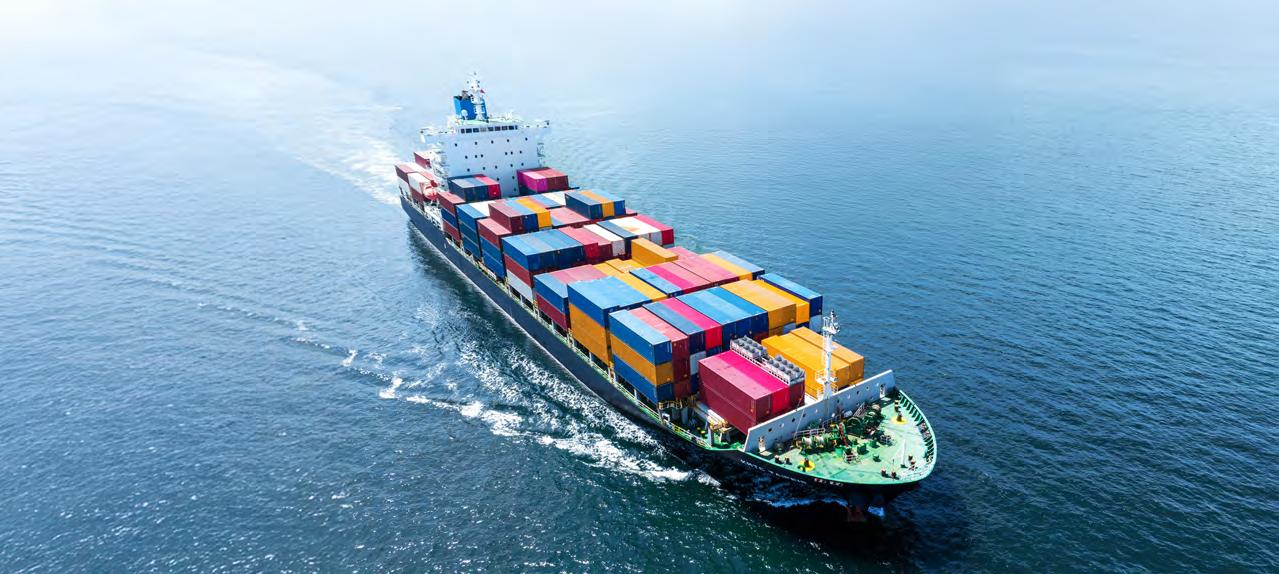
The success of projects striving to deliver net zero rely on stable marine cargo supply chains. We can protect energy transition projects across the globe through our specialist Lloyd’s syndicate.
The transit, movement and storage of technologies, raw materials and non-fossil fuels required for energy transition projects and activities are all in scope. This includes, but is not limited to:
• Batteries and battery storage systems
• Electric Vehicles
• Solar PV
• Wind turbine components
• Biomass
Click here to find out more
For product and regulatory disclosures, click here.

Sean Maloney , CEO of Elaborate Communications, reviews the complex and tragic case of the MSC Flaminia showing how challenging and personal such a claim can be
On 14 July 2012, a violent explosion onboard the 6,732 teu MSC Flaminia in the middle of the Atlantic Ocean, caused the death of three crew members and created one of the most protracted court cases in maritime history.
And while the legal remnants of the case still linger on today with the Supreme Court in London now being asked by MSC to rule on a bid to limit liability for firefighting and clean-up costs, the case is significant in that both the owner of the vessel, Conti Reederei, and the ship manager, NSB, were found by a US judge, earlier in the proceedings, to bear zero liability for the incident.
This was an outcome that was as much to do with the detailed and chronicled management procedures of the manager as it was with the very strong working relationship between the manager and the vessel’s insurer The Swedish Club.
“At the end of the day, the Swedish Club is the insurer and when you have an accident, an insurer is normally never your friend. In business, it’s all about money and not about giving gifts. But it is different with the Swedish Club I can vouch for that.”
The explosion occurred shortly after 08:00 hours on 14 July, after white “smoke” had been reported escaping from one of the cargo holds of the 300 metre long container ship, around two hours earlier.
Three crew sustained fatal injuries in the explosion and a further two were injured. At the time of the explosion, the vessel was in the middle of the Atlantic Ocean, having loaded containers in the Gulf ports of the US and Mexico and was crossing to Europe.
Stolt Tank Containers had 29 containers aboard the ship. Three of the Stolt containers were stowed in cargo hold number four, which was alleged to have caused the fire aboard the vessel. It was also alleged that the Stolt tank containers did not provide adequate information about the hazardous nature of the cargo.
Intensive investigations of the casualty identified that the explosion originated from the three 20 foot ISO tanks containing a hazardous chemical called Di-Vinyl Benzene (DVB) – a monomer used in industry to make polymer plastic.
According to an account of the investigation by consultant scientists and engineers Burgoynes: “The chemical analyses carried out on the retained exhibits indicated that the DVB had polymerised and decomposed, resulting in flammable decomposition products being expelled into the cargo hold at high temperature through the anticipated operation of pressure relief valves on the ISO tanks. It was those decomposition products that was the fuel for the explosion.”
Sanne Hauschildt, currently managing director of NSB Claim Solutions but head of the manager’s insurance and claims teams investigating the casualty as part of the expanded emergency response team at the time of the accident, is still affected by the impact such a casualty,
especially one involving loss of life, had on her and the team members at the time.
“After initially working on the case for 16 months, I had to leave for a time out of five months, because I was done in by the stress. This also applied to other colleagues in the team. However, there had been many more hard-working colleagues at NSB who kept fighting and did an excellent job. But looking back, the Flaminia case simply took too long and it was not necessary to lose lives as we did,” she said.
“When you follow cases in the US courts, you never find a judge who awards someone zero liability. It is the first time I had heard of it happening,” added Sanne.
But it was the special relationship that she, as the manager, and the Swedish Club, as the insurer, had built up that contributed significantly to the successful outcome of the case.
“There’s a long relationship between NSB and the Swedish Club. At the end of the day, the Swedish Club is the insurer and when you have an accident, an insurer is normally never your friend. In business, it’s all about money and not about giving gifts. But it is different with the Swedish Club I can vouch for that. The very strong relationship and friendship we had was very different than I had experienced with any of the other clubs. The team at the Swedish Club, fronted by an amazing claims handler Benny Johansson, helped to guide us and the shipowner throughout the entire case, not only by their expertise, but financially,” she said.
Referring to Benny as ‘the Brain’, Sanne said the Swedish Club team went above and beyond what was expected, even down to the number of times the team travelled to Wilhelmshaven or Romania as part of their investigations.
“When you are faced with a casualty, you are obliged to call
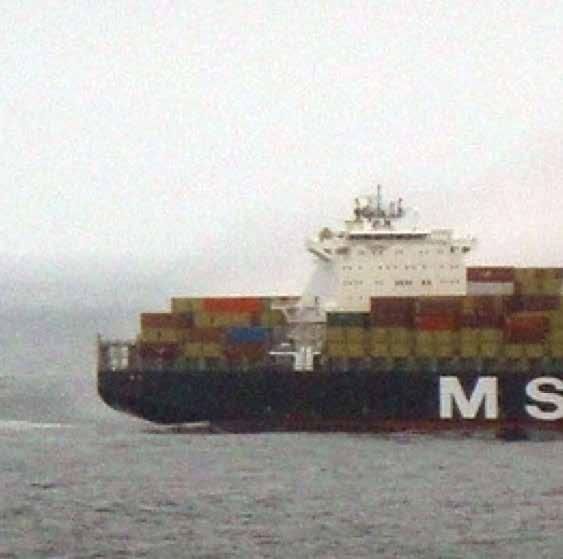
the insurer in the first instance. That is what we did and there were no long discussions; we were all on the same page and it was clear that The Swedish Club was there to help us,” she added. “Apart from Benny, we also had a very good broker who worked with us for all these years.
“At the time of the explosion, the vessel was in the middle of the Atlantic Ocean, having loaded containers in the Gulf ports of the US and Mexico. Stolt Tank Containers had 29 containers aboard the ship. Three of the Stolt containers were stowed in cargo hold number four, which was alleged to have caused the fire aboard the vessel.”
“What I found amazing about Benny was that he remembered everything When I was struggling to find a document or piece of communication, he knew where it was.”
But when questioned further, Sanne pointed to the hurdles they faced in actually dealing with the casualty.
“The first problem we had to deal with after two months of negotiating with all available coastal states in finding a port of refuge, was handling the contractual relationships between the various parties. The case brought together a variety of interests such as the ship owner, the charterer, the cargo owner of the DVB, all other cargo owners, and there was even a family that was relocating from Charleston to Switzerland, who were waiting for their container with all their family furniture in. There were so many single tragic stories.
“We had the cargo manufacturer, the manager which was us - NSB, the crew manager, the insurer, and not only the Swedish Club, but many other insurers for other cargo owners. And everyone had an interest. And everyone was of
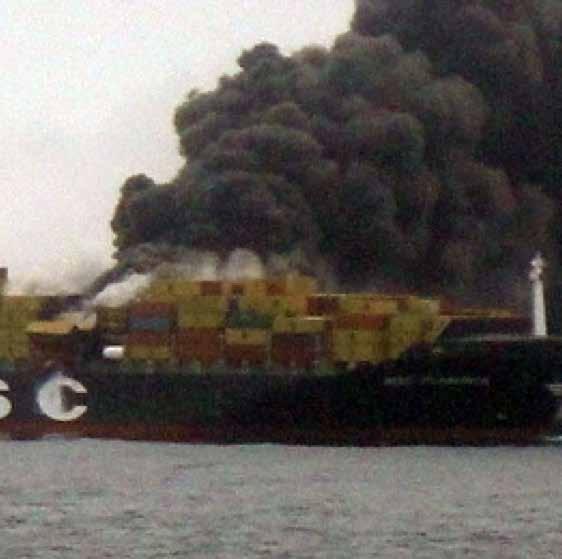
course eager to protect their assets. Everyone had to follow their own protocols and everyone had an insurer behind them, so there were many cooks ready to spoil the broth.
“And of course, in the beginning it was deemed to be nobody else’s fault apart from ours. When you think about the cause of the explosion, everyone had their own opinion. Newspapers made-up their own stories.”
Another major hurdle was finding the right experts who had knowledge about the cargo, “because we could not ask the manufacturer of the affected cargo, of course. All of a sudden, the people that you were supposed to ask when investigating a casualty, were off limits. So we had to bring in all these experts to gain knowledge about the things that we simply couldn’t ask anyone else about.
“Given the multiple contracts in place, we also had several applicable jurisdictions to deal with. The charter party was under English law; the cargo came from the US; the ship was flying the German flag; the ship owner and the manager were German; the port of refuge was Wilhelmshaven in Germany and we had to deal with repair yards and waste disposal in Denmark and Romania.
“Most importantly, I should mention that the necessary changes until today, in finding a port of refuge or carrying hazardous material on board, are not enough to sufficiently protect our crew,” she added.
“When you have a major incident, you have to get on and deal with it. And immediately, the practical thing is to get the ship to a port, in this case it was Wilhelmshaven, and then to repair. Because there are so many different things going on at the same time, you have to work with one box at a time. When you close one box you go to the next one and so on,” said Benny Johansson.
“Of course, we are there to get any monies owed to the ship owner or the manager,” he added.
Benny again: “We could quickly see in the beginning that the hull insurers would not cover all of the expenses that would accrue through the course of the casualty.”
And according to Benny, P&I had its work cut out following the casualty, dealing not only with the crew deaths, but dealing with the air and the cargo pollution.
“The financial strain on the shipowner was such that we had to assist them if we were to have any chance of getting the ship out of the port and into repair. We had no option but to assist the owner financially, there was no question about that, otherwise the ship would have stayed in Wilhelmshaven,” he said.
When you have a major casualty there is a tendency to see claims coming in from all directions, something which happened with the Flaminia. “A lot of people, and I am talking about a lot of people, see money coming in and they inflate everything. So, I stopped paying the port and they threatened to arrest us and then we had to negotiate. Things were happening continuously. We went to arbitration over the port costs, to finalise the matter and the port costs were reduced by more than €5m. And this was because we went to court.
“It was the same with the British authorities because the ship was in the English Channel, they said they had a lot of costs here and demanded £1m, we ended up paying £200,000. The French authorities asked for more than €10m, but we manged to get the cost down to €450,000. There was a hurdle everywhere,” he said
“The whole thing is about money. Life doesn’t matter. It is about money.”
One of the aspects that came out of the case was that the owners and the managers were not liable. Was this down to the hard work of the shipowner and the manager?
“We had to show, of course, that the crew was competent and had all the right certificates, and that the ship was in shipshape condition. We had to show the courts that the vessel was in good condition which we did. Of course, the manager had to prove that it had all the right certificates and paperwork and the way they worked. When you are dealing with a competent manager, it is not difficult to do this. We should mention the support we had from all our very competent lawyers in Germany (Ahlers and Vogel), France (HFW), UK (HFW) and US (MMWR and Phelps),” concluded Benny.
13 & 14 May 2025, Athens



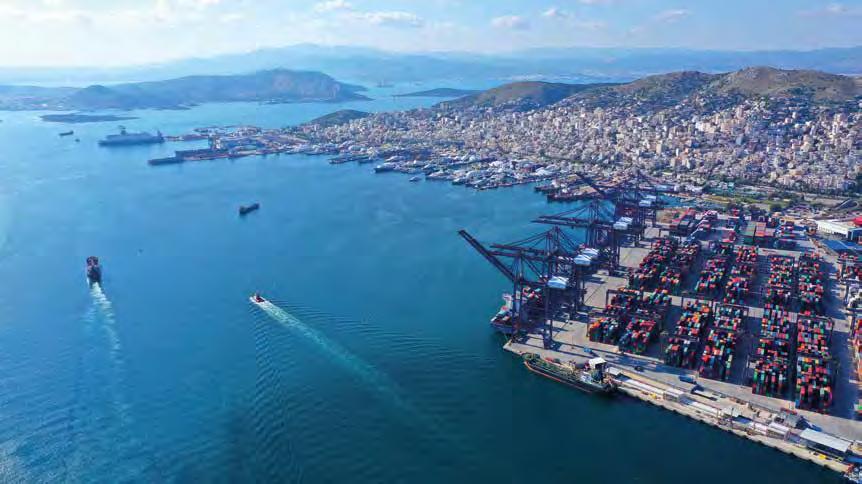
DAY TWO - 14th May 2025
09.55-10.00 Welcome Address: George Tsavliris, Non-Executive Chairman, OneGlobal Greece & Cyprus
10.00-10.20
Keynote Address: Topic TBC
Presenter: Matthew Lodge, His Majesty’s Ambassador to the Hellenic Republic, Greece
10.20-10.40 Keynote Address: Topic TBC
Presenter: Invited Minister of Shipping and Island Policy Vasilis Kikilias
10.40-11.20 Panel Discussion: Integrated Waste Management Services After a Fire on Board a Container Vessel
Moderator: Stavriana Asprogiannidou
Panellists: Gianluca Rol , Master Mariner and Marine Consultant, Minton, Treharne & Davies Group, Athanasios Polychronopoulos, Chief Executive O cer and Managing Director, Polygreen, Martin Bjerregaard, Director, D3 Consulting, Afroditi Karava, Senior Claims Manager & Solicitor, The London P&I Club
11.20-12.00 Panel Discussion: Sanctions in Practice
Moderator: Dimitri Vassos, Partner, HFW
Panellists: E e Koureta, P&I Claims Director, NorthStandard, Danae Pispini, Lawyer, Gard, Dmitry Vavilov, Managing Director, Maritime Risk Management, Joanna Pavlidis, Associate Director, The London P&I Club
12.30-12.50 Interactive Session: The Recurring Risk of Stowaways
Presenters: Aliki Gotsi, Senior Claims Manager, West of England P&I Club
Ian Clarke, Chief Executive O cer (Hellas), West of England P&I Club
12.50-13.10
Presentation: Trends in War Risk Claims
Presenter: Dimitris Exarchou, Partner, HFW
13.10-13.30 Fireside Chat: Time for the End of Billable Hours for Maritime Lawyers?
13.30-13.45
Participant: Alexandra Davison, Head of FDD Claims – Greece, NorthStandard
Presentation: A Heavy Price for Small Misdemeanours?
Presenter: Turker Yildrim, Partner, Esenyel Partners
DAY ONE - 13th May 2025
10.00-10.15 Co ee breaks: 11.40-12.10 & 16.05-16.25 Lunch: 13.40-14.30
09.55-10.00 Welcome Address: Yannis Triphyllis, Board Member, Hellenic Chamber of Shipping
Keynote Address: The Future Looks Bright – Shipping Remains a Global Force
Presenter: George Alexandratos, Chairman, Hellenic Chamber of Shipping
10.15-10.30 Keynote Address: Bringing a New Balance to the Marine Insurance Sector
Presenter: Vivi Kolliopoulou, President, WISTA Hellas - Insurance Manager, Angelicoussis Group
10.30-11.20 Panel Discussion: The Big Picture – Does Marine Insurance Remain Fit for Purpose?
Moderator: Ilias Tsakiris, Chair, Ocean Hull Committee, International Union of Marine Insurance
Panellists: Manos Lorentzos, Executive Director, Seascope Europe S.A. and Chairman, Hellenic Committee of Lloyd’s Brokers, Haris Lagios, Head of Marine, Aon Greece, Davinia Melachrinos, Partner – Marine, McGill and Partners
11.20-11.40 Presentation: Are Marine Claims Being Redefined?
Presenter: George Margetis, Chief Executive O cer, Margetis Maritime
12.10-13.00 Panel Discussion: Debating The Hot Topics – LOF
Moderator: Martin Hall, Partner, Hill Dickinson
Panellists: George Tsavliris, Non-Executive Chairman, OneGlobal Greece & Cyprus, Elias Psyllos, Vice President, T&T Salvage, Mark Beare, Regional Claims Director, UK P&I Club, Arabella Ramage, Legal and Regulatory Director, Lloyd’s Market Association, Andrew Dyer, Regional Claims Director EMEA-SVP, Shipowners claims Bureau Hellas, Kiran Khosla, Principal Director (Legal), International Chamber of Shipping
13.00-13.40 Panel Discussion: The Red Sea
Moderator: Nicholas Berketis, Manager, J.Kouroutis & Co. Ltd. Insurance and Reinsurance Brokers
Panellists: Spyros Vlassopoulos, Managing Director, IONIC Shipping, Despina Kalfa, General Manager, Senior Broker, Aries Marine Insurance Brokers Ltd, Damian Bischiniotis, Marine Broker, Blueaigaion, Dr. Apostolos Papachristos, Risk Manager, Ydrogios Insurance and Reinsurance S.A.
14.30-14.50 Case Study: Years of Wrangling Ahead? The Dali
Presenter: Dimitris Theodorou, Director, Emergency Response, Resolve Marine
14.50-15.10 Presentation: End of Life Care Needs Attention
Presenter: Maria Moisidou, Partner, Hill Dickinson
15.10-15.30 Presentation: Fire at Sea – Navigating the Complexities of Marine Fire Investigations
Presenter: Tom Peat, Forensic Investigator, Hawkins & Associates
15.30-16.05 Panel Discussion: The Human Element – Managing Crew
Moderator: Ioanna Topaloglou, General Manager, Orion Brokers
Panellists: Alexandra Chatzimichailoglou, Senior Claims Adviser, Lawyer, Gard, David Nichol, Senior Advisor Loss Prevention & Claims, The Swedish Club
16.25-16.40 Presentation: What Does the Philippines’ Magna Carta Mean for the Shipping Sector?
Presenter: Holly Hughes, P&I Senior Claims Executive, NorthStandard
16.40-17.15 Panel Discussion: The Trump E ect
Moderator: Yannis Triphyllis, Board Member, Hellenic Chamber of Shipping
Panellists: Ino Afendouli, Director, Institute of International Relations (IDIS), Athanasios Platias, Prof. International Relations, University of Piraeus, Department of International and European Studies, Maria Gavouneli, Director General, ELIAMEP; Professor, Faculty of Law, National and Kapodistrian, University of Athens
17.15-17.35 Presentation: Fuel EU Maritime Regulation
Presenter: Eleni Antoniadou, Lawyer, Gard
20.00 - LATEPolygreen are proud to sponsor the Marine Insurance Greece Party 2025, which will be held at Barbarossa, Athens. All delegates are warmly invited to attend.



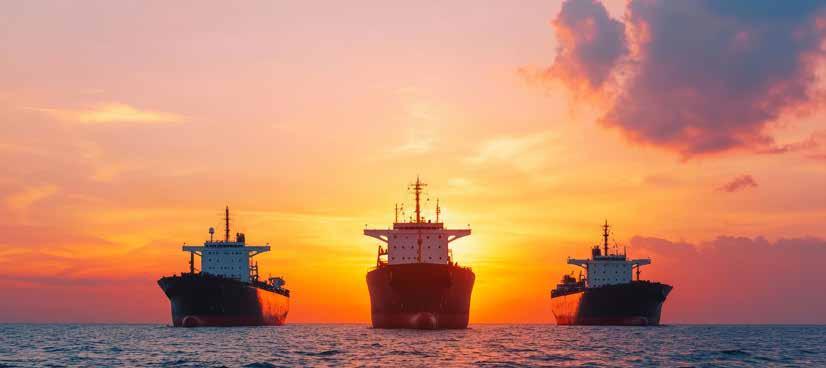

Jean-Charles Gordon , Kpler’s director of ship tracking, explains how tighter regulations, shifting political alliances and new technological capabilities will continue to shape the maritime sector and role of marine insurance in global trade in the era of sanctions
A confluence of new sanctions, evolving regulations and escalating geopolitical tensions has placed marine insurers squarely in the spotlight. At a time when maritime trade is striving to recover from global disruptions, underwriters are confronted with an unprecedented maze of rules designed to curtail the flow of sanctioned oil and other commodities.
From the UK’s Office of Financial Sanctions Implementation (OFSI) to the European Union’s frameworks and the US Office of Foreign Assets Control (OFAC), regulators are tightening their grip on the shipping sector. Additional measures—such as the oil price cap championed by Western alliances—have intensified the industry’s compliance burden, compelling insurers and protection and indemnity (P&I) clubs to enhance their investigative capabilities.
This expanded regulatory reach has thrust the marine insurance world into unfamiliar territory. Operators linked to blacklisted regimes are deploying intricate methods to evade sanctions, using deceptive shipping practices and elaborate ownership structures to obscure true beneficiaries.
Meanwhile, insurers face the twin risks of severe financial penalties and reputational damage should they inadvertently provide cover to prohibited activities. Addressing this challenge demands a more forensic approach to underwriting and claims scrutiny, underpinned by real-time data, comprehensive vessel tracking and close collaboration with international watchdogs.
Historically, sanctions in maritime activities targeted a limited number of jurisdictions. Today, however, they are increasingly tailored to specific commodities, shipping corridors and even types of financial transactions. Insurers must now determine not only the lawfulness of a vessel or its cargo but also whether its trading falls below an imposed price ceiling—as is the case with recent oil price cap regulations.
Gone are the days when a simple blacklist sufficed. Modern underwriters must scrutinise trade documentation, shipping logs and beneficial ownership records in evergreater detail.
The situation is further complicated by the rapidity with which regulators act. New restrictions may be announced at short notice, or existing lists may be updated with revised identifiers for flagged vessels. Consequently, insurers are required to maintain up-to-date internal watchlists and be prepared to deny or adjust cover swiftly if a client or cargo becomes associated with a newly sanctioned entity. This constant state of vigilance, though undoubtedly onerous, is fast becoming an integral element of modern underwriting.
Market observers note that this shift underscores the strategic importance of maritime transport in advancing foreign policy. With global energy and commodity flows forming the lifeblood of many national economies, targeting shipping has become a potent means of exerting pressure on sanctioned regimes. Yet this policy also places a considerable burden on insurers and their compliance teams, who now effectively serve as frontline enforcers—or risk incurring severe penalties themselves.
Caught in this tightened regulatory net, operators linked to restricted regimes have become ever more inventive in their strategies for dodging scrutiny. Among the most prevalent tactics are:
l AIS manipulation
AIS (automatic identification system) signals allow market
participants and regulators to track vessel movements. In an effort to conceal their true routes, some ships resort to “spoofing,” broadcasting false coordinates that place them in one part of the world while they are, in fact, loading or unloading cargo elsewhere. Others may switch off their AIS transponders entirely—a phenomenon known as “going dark”—to obscure port calls in sanctioned regions or illicit ship-to-ship (STS) transfers.
l Dark ship-to-ship transfers
STS operations are a regular fixture in the tanker sector, but the recent rise of “dark” transfers has troubled compliance teams. Vessels may meet clandestinely in remote waters, disabling transponders to avoid creating a digital record of their rendezvous. The cargo is then offloaded onto another tanker, ready to be shipped on to a port that, on paper, appears legitimate. By the time these ships reappear on AIS, any evidence of a mid-voyage transfer may be difficult to trace.
l Opaque ownership webs
While legitimate shipping often involves complex ownership structures, sanctions have given rise to a new wave of shell companies. These entities are registered in jurisdictions with minimal disclosure requirements, making it difficult to identify the ultimate beneficiaries. In certain cases, the vessel’s name, flag and nominal owner may shift repeatedly over a short period—colloquially known as “flag hopping”— further complicating due diligence for underwriters.
Between January 2022 and January 2025, maritime deception tactics have evolved markedly. Dark STS transfers surged from fewer than 10 incidents per month in early 2022 to a consistent range of 90–130 monthly cases by 2024—an increase of more than 1,200%. This escalation coincided with intensified sanctions following regulatory actions in early 2024 targeting high-risk maritime corridors.
In contrast, AIS spoofing incidents, which averaged 5–10 events per month, experienced a sudden spike to around 160 cases in May 2024—a 1,500% increase—before rapidly declining as advanced detection technologies and enforcement measures were deployed. These trends underscore that, while digital deception such as AIS spoofing can be swiftly mitigated, physical evasion tactics like dark STS transfers remain resilient.
For insurers, the consequences of underwriting a sanctioned vessel or cargo are stark. Regulatory bodies demand strict adherence to sanctions laws and any suggestion that an insurer has extended cover without meticulous checks can result in heavy fines, licence revocations and significant reputational damage. Moreover, the forced mid-year withdrawal of coverage on detecting a breach can disrupt forecast premium revenue, further straining financial projections and market positioning.
P&I clubs, operating on a mutual basis, are equally exposed. A single large claim involving a sanctioned vessel could tarnish the entire club’s reputation and drive up costs
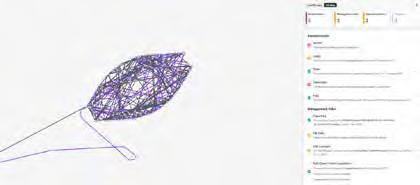
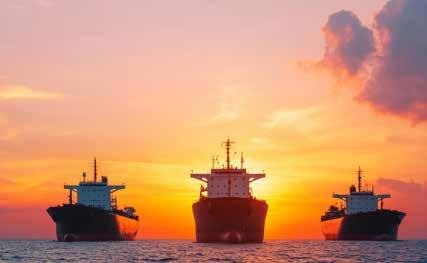

3-month rolling average trends in AIS spoofing and dark STS transfers (January 2022 – December 2024) - Kpler data
for all members. The claims process itself poses additional challenges. Should a vessel found to be in breach of sanctions suffer a casualty, insurers may be thrust into a complex legal and regulatory battle to defend the validity of their cover. Even if a claim is ultimately repudiated on the grounds of sanctions violations, the associated legal fees and administrative burdens can be immense.
Reinsurers are increasingly demanding robust evidence that front-line insurers have exercised due diligence—often requiring continuous monitoring of vessels rather than a one-off check at the inception of the policy period. In response, many insurers and P&I clubs are recalibrating their risk appetites. Some are narrowing the regions or cargo types they cover, while others are investing heavily in compliance infrastructure and thirdparty data tools. A growing trend is the integration of internal processes with external intelligence platforms capable of tracking vessels in near real-time, generating alerts for unusual activity and mapping historical associations with restricted parties.
Between January 2022 and January 2025, vessel management risks were highly volatile. Incidents—including improper classification, missing P&I insurance, unknown ISM managers, and PSC detentions—averaged 60 to 120 per month in 2022 and 2023. Then, starting in September 2024, incidents surged to more than 750 per month—a jump of more than 500%. This
spike was driven by the enforcement of sanctions, which led to more than 350 vessels and numerous companies being added to sanction lists between September 2024 and January 2025. In response, classification societies and P&I clubs severed ties with these entities, leaving vessels unclassed, uninsured and in some cases managed by unknown ISM providers—or with no ISM at all.
l Bolstering investigations
With sanctions evolving rapidly, marine insurers recognise that reactive strategies are no longer sufficient. The focus has shifted to proactive investigation, enabled by live data analytics and a broader spectrum of maritime intelligence.
Many insurers now rely on multi-source platforms that amalgamate satellite imagery, port call records and global commercial data into cohesive dashboards. Such systems reveal vessel behaviours that standard AIS tracking might overlook.
l Vessel profiling
A vessel’s flag state, age, ownership history and port calls can collectively illuminate its risk profile. By consolidating these data points, underwriters can assess whether a vessel is linked to sanctioned regions. Repeated calls at restricted ports or sudden changes in ownership are immediate red flags, particularly when viewed in a longitudinal context.
l Cargo visibility
Recent price cap regulations have heightened the need to verify cargo origins and valuations. Should the declared price of oil or refined products deviate from global benchmarks or recognised regional differentials, insurers may request supplementary evidence. Cross-referencing cargo documentation against shipping manifests and customs data can expose attempts to disguise a sanctioned route.
l Real-time alerts
Continuous monitoring is now indispensable for preventing regulatory breaches. Alert systems can flag abrupt route
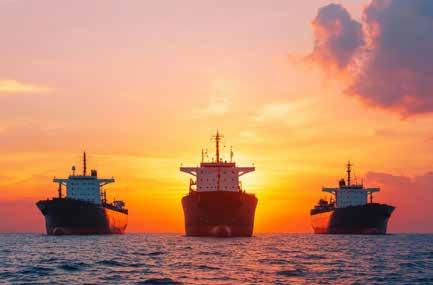
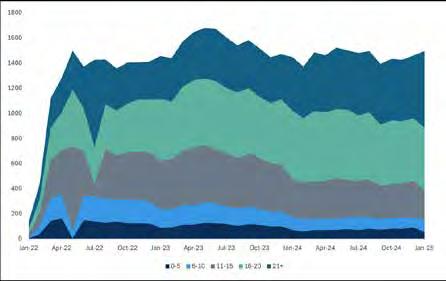
deviations, significant AIS signal gaps or STS events in waters known for illicit transhipments. Prompt investigation of such alerts enables insurers to cancel or adjust cover before a more serious incident arises, contrasting sharply with earlier models that assessed risk only at policy inception and renewal.
The period from January 2022 to January 2025 reveals clear trends in the age profile of vessels implicated in the transport of sanctioned cargo. At the beginning of 2022, incidents were minimal, but by April 2022, the number of implicated vessels had surged past 1,400—a response likely triggered by new sanctions regimes following major geopolitical events.
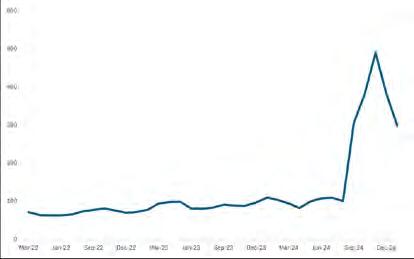
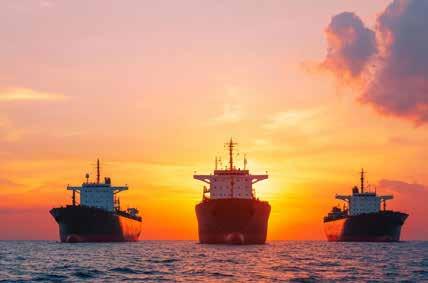
Vessels aged 21 years and older consistently account for the largest share, representing more than 40% of cases at peak times. This trend underscores a preference for older, less scrutinised tonnage in sanctions evasion networks, where opaque ownership and weaker compliance oversight are common. Vessels in the 16–20-year bracket also play a significant role, contributing roughly 30–35% of cases during the peak years of 2023 and 2024. By contrast, newer vessels (0–5 years) consistently form the smallest proportion—rarely exceeding 10% of the total. This pattern reflects not only the effect of stricter financing and insurance requirements but also the fact that these high-value, early-life assets carry a higher opportunity cost if they are subject to sanctions.
Overall, the number of cases involving sanctioned cargo remained elevated through 2023, peaking again in mid-2024 before showing a slight decline towards early 2025. This evolution highlights the persistent reliance on older fleets in high-risk operations and underlines the importance of targeted monitoring strategies based on vessel age profiles.
In 2024, the grey or shadow fleet played a significant role in facilitating DPP (dirty petroleum products) and CPP (clean petroleum products) flows along key global trade routes. Notably, the largest volume of grey fleet activity was observed between Russia and India, where 9.5% of total flows—exceeding 64 million tonnes—reflected India’s burgeoning energy demand. Trade between Russia and China
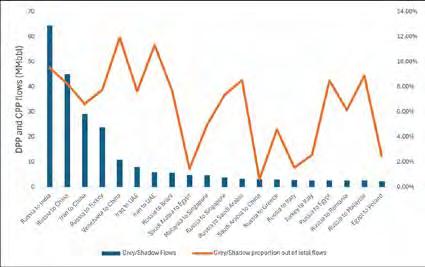
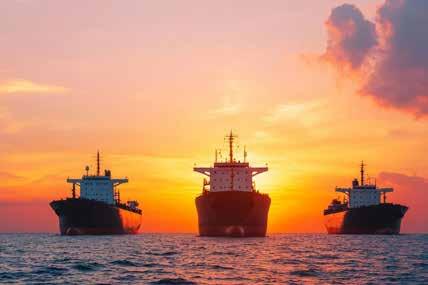
followed closely at 8.3%, reinforcing China’s ongoing energy diversification strategies.
Meanwhile, routes such as Venezuela to China (11.9%) and Iran to the UAE (11.3%) exhibited some of the highest proportions of grey fleet involvement, signalling a heavy reliance on shadow fleets in regions affected by sanctions and geopolitical tensions. Other notable flows, including Russia to Saudi Arabia (8.5%) and Russia to Turkey (7.8%), underscore shifting trade dynamics as traditional supply chains adapt to global sanctions and regulatory pressures. This data highlights the increasingly central role of grey fleets in enabling energy trade in politically sensitive and high-risk regions.
Marine insurers are increasingly realising the value of open communication with regulators and industry bodies. In the UK, for example, OFSI actively encourages businesses to report suspicious findings—a collaborative stance that can ultimately guide enforcement efforts.
Industry groups, ranging from broker associations to leading P&I clubs, have stepped up intelligence-sharing initiatives, exchanging anonymised data on illicit STS locations or frequently flagged vessels. This collective effort, supported by classification societies, port authorities and, where appropriate, enforcement agencies, helps distribute the compliance burden and promotes consistent standards across the sector.
Reinsurance markets, too, have become more active in demanding transparency. Keen to avoid the repercussions of sanctions risk, reinsurers may now require detailed risk reporting throughout the policy lifecycle, further embedding robust compliance practices within underwriting teams.
As western governments continue to refine and expand their sanctions regimes, marine insurers must brace for further
constraints. Simultaneously, illicit operators are likely to adopt even more sophisticated methods to conceal their activities, particularly as technologies for AIS spoofing and other forms of digital manipulation become more accessible. Against this backdrop, the industry is witnessing a boom in advanced data analytics—often combining machine learning with satellite networks—to detect deceptive patterns more effectively.
A judicious blend of human expertise and cutting-edge analytics is paramount. Seasoned underwriters, claims managers and compliance professionals bring a wealth of maritime experience—from interpreting subtle signals in bills of lading to recognising suspicious port calls. When this expertise is paired with timely, high-resolution data, insurers are better equipped to navigate the labyrinthine challenges of modern sanctions enforcement.
Companies that invest in these areas are more likely to preserve both their regulatory standing and their reputations. They can also secure the confidence to develop innovative products and services, underpinned by a robust compliance framework. Conversely, those that fail to modernise their investigative approaches risk being caught out by ever-tightening enforcement, with potentially severe consequences for their balance sheets and client relationships.
Ultimately, the role of the marine insurance sector extends beyond simply underwriting ships and cargo—it underpins global trade itself, ensuring that the movement of goods across the oceans continues in a structured and accountable manner. The emerging sanctions landscape necessitates a more investigative stance, shining a light on high-risk activities and severing the insurance lifeline for those flouting international rules.
Striking the delicate balance between facilitating legitimate commerce and preventing illicit activity is no small feat. Yet, through diligent risk assessment, crossindustry collaboration and an unwavering commitment to the highest ethical standards, marine insurers can remain both profitable and compliant. While the path forward demands continuous adaptation, it also presents an opportunity for insurers to position themselves as trusted guardians of transparency on the high seas.
In the coming years, even tighter regulations, shifting political alliances and new technological capabilities will continue to shape the maritime sector. Marine insurance will remain a linchpin of global trade, providing the financial safety net that keeps commerce flowing. By embracing data-driven vigilance and fostering strong collaborative networks, insurers can bolster the industry’s resilience in this sanctions-driven era—ultimately safeguarding the legitimate trade that underpins global prosperity.

Guido Gavio of Belfor
The global shift toward electric vehicles (EVs) has been nothing short of remarkable.
According to the International Energy Agency (IEA), global electric car sales reached 14 million in 2023, representing a 35% increase from 2022. This rapid adoption continues to accelerate, with EVs projected to account for more than 60% of new car sales worldwide by 2030 (IEA, 2023).
However, this revolution carries hidden costs. As EV production and transportation have ramped up, so too have the incidents of catastrophic fires during shipping. Data from the National Fire Protection Association (NFPA) indicates that EV-related fires have increased by approximately 41% since 2020, with a notable spike observed in transportation and storage contexts (NFPA, 2024).
The correlation is unmistakable. While EVs represent innovation and progress toward sustainability, they also introduce new and significant fire risks, particularly during transportation on car carriers.
What makes electric vehicles particularly dangerous in the shipping context? The answer lies in their batteries.
Unlike conventional vehicles, EVs rely on lithium-ion battery packs that contain flammable electrolytes. These batteries can experience “thermal runaway” — a dangerous chain reaction in which one failing cell generates heat that damages adjacent cells, creating a fire that:
• Burns at temperatures exceeding 2,000°F (1,093°C);
• Self-sustains without external oxygen;
• Releases toxic gases including hydrogen fluoride;
• Can reignite days after appearing extinguished;
• Requires up to 10 times more water to suppress than conventional vehicle fires; and,
• The fire suppression systems installed in ships are not sufficient to extinguish the fire once it has started.
Research published in the Journal of Marine Engineering & Technology (2023) found that an EV fire produces approximately 6-8 times more heat energy than a conventional vehicle fire, making containment exponentially more difficult in the confined spaces of a car carrier.
The past decade has witnessed a troubling rise in car carrier fire incidents. According to data compiled by the International Maritime Organization (IMO) and Lloyd’s List Intelligence, (see graph below) the data reveals a stark trend. Between 2014 and 2024, car carrier fires increased by approximately 167%, with economic losses growing by 460%. More importantly, the involvement of EVs in these incidents rose dramatically, from zero in 2014-2015 to being present in nearly 88% of incidents by early 2024 (Maritime Fire Safety Association, 2024).
Some of the most notable incidents include:
• MV Höegh Xiamen (2020): Fire resulted in $40m in losses, with initial spark traced to hybrid vehicle batteries;
• Felicity Ace (2022): Sank after a fire that began in the EV storage area, resulting in total loss of cargo valued at over $400m;
• Fremantle Highway (2023): Fire linked to EV battery, resulting in one fatality and approximately $300m in damages; and,
• Golden Ray (2024): Fire exacerbated by multiple EV
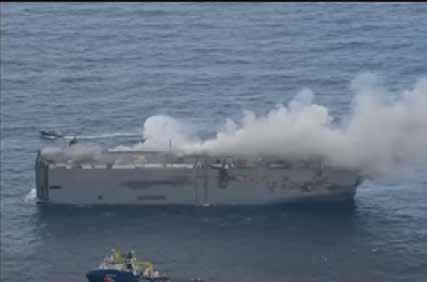

thermal runaway events, requiring specialised firefighting techniques.
Car carriers present a uniquely dangerous environment for fire propagation. These vessels typically feature:
1. Confined spaces with limited ventilation: Once a fire starts, heat and toxic gases accumulate rapidly;
2. Minimal compartmentalisation: Open vehicle decks allow fires to spread horizontally with little resistance;
3. Limited firefighting capabilities: Most vessels lack specialised equipment for battery fires;
4. High fuel loads: Hundreds or thousands of vehicles with combustible materials in close proximity; and,
5. Remote locations: Often far from emergency response resources.
Research from the Maritime Safety Research Centre (2023) indicates that the average car carrier has fire suppression systems designed for conventional vehicle fires, not the intense heat and chemical reactions of lithium-ion battery fires. This creates a dangerous capability gap that leaves crews ill-equipped to handle EV fires.
According to a study in the International Journal of Maritime Engineering, the time from ignition to uncontrollable fire can be as little as 30 minutes in a car carrier containing EVs. This is approximately 40% faster than with conventional vehicles alone (IJME, 2023).
In the challenging landscape of car carrier fires, BELFOR has emerged as an industry leader in specialised recovery and restoration services. With decades of experience in complex fire restoration, we have developed targeted solutions for the unique challenges posed by EV-related maritime fires.
BELFOR’s comprehensive approach includes:
1. Post-fire damage assessment and segregation of vehicles
After a fire incident, experts conduct comprehensive damage assessments to:
• Identify and segregate the contaminated and damaged vehicles;
• Remove the contamination vehicles first from the ship;
• Segregate damaged vehicles by categorising vehicles with minor damages to total loss;
• Remove the vehicles with minor damage;
• Conduct loss mitigation on vehicles with no damage or minor damage; and,
• Document damage for insurance and regulatory compliance.
2. Post-fire loss mitigation in the car carrier
Experts also perform loss mitigation activities to:
• Engine room;
• Power generators;
• Power distribution;
• Engine control room; and,
• Main engine.

“Research from the Maritime Safety Research Centre (2023) indicates that the average car carrier has fire suppression systems designed for conventional vehicle fires, not the intense heat and chemical reactions of lithium-ion battery fires.”
3. Damage assessment and decontamination proposal for the car carrier
Damage assessment and advice on restoration options will be conducted with other stakeholders.
The global transition to electric mobility represents progress toward sustainable transportation, but this progress demands corresponding advances in safety protocols and technologies. Car carriers have become the front line in this evolving challenge, where the consequences of inadequate preparation can be catastrophic.
The data is clear: EV-related fires on car carriers represent a growing threat requiring immediate attention from stakeholders across the maritime industry. Through improved regulations, vessel design innovations, crew training and specialised recovery services the industry can navigate this transition safely.
As we look to the future, the success of the electric vehicle revolution will depend not just on technological innovation in the vehicles themselves, but on our ability to transport them safely across the world’s oceans. The rising tide of EVs brings promise, but also responsibility—one that demands our urgent attention and action.
The Admiralty Court has confirmed that where a party had been unsuccessful in obtaining a declaration entitling them to limit their liability under the Convention on Limitation of Liability for Maritime Claims 1976 in proceedings dedicated to that issue, that same party could not then try to assert rights under the Limitation Convention as a defence in the substantive liability proceedings.
The argument arose in the context of claims brought by RTE, a French electricity company which owned/operated high voltage cables running under the English Channel.
Following a storm in November 2016, Stema Barge II, a dumb barge anchored off Dover at the time, is said by RTE to have dragged its anchor through RTE’s cables. The owner and manager of the barge were granted a limitation decree under Article 1(2) of the Limitation Convention which provides that:
“Article 1. Persons entitled to limit liability
1. Shipowners and salvors, as hereinafter defined, may limit their liability in accordance with the rules of this Convention for claims set out in Article 2.
2. The term shipowner shall mean the owner, charterer, manager and operator of a sea-going ship. …”.
Their related company, Stema Shipping (UK) Limited which had supplied bargemasters and crew members to work on the barge while at anchor off Dover, argued that they could also limit their liability as “operator” under Article 1(2) of the Limitation Convention.
Stema UK was successful with this argument in the Admiralty Court in 2020. However, RTE was granted permission to appeal. In the order granting permission, the Court of Appeal noted that:
“The judgment at [78] and [79] seems to assume that if Stema UK is not an operator or manager in its own right, it or its employees, would not be able to rely on Article 1(4) of the Limitation Convention if they are ultimately found to have caused the damage to the cable. Again, it might be useful for the Court considering the appeal to receive submissions on the application of Article 1(4) given the concern that if Stema UK is not an operator or manager, RTE will be able to pursue their claim for damages in full rather than subject to the Convention.”
Article 1(4) provides that:
“4. If any claims set out in Article 2 are made against any person for whose act, neglect or default the shipowner or salvor is responsible, such person shall be entitled to avail himself of the limitation of liability provided for in this Convention.”
In the end, the Article 1(4) argument was raised but not pursued by Stema UK in the Court of Appeal. In December 2021, the Court of Appeal found in favour of RTE, holding that Stema UK was not entitled to limit its liability “pursuant to section 185 of the Merchant Shipping Act 1976 and is not entitled to a general limitation decree in the from ADM19 or at all”. Stema UK applied to the Supreme Court for permission
Jenny Salmon , legal director at HFW in London reviews the implications of Réseau de Transport d’Électricité v. Costain Limited & Others [2025] EWHC 73 (Admiralty) and the use of the Limitation Convention

to appeal, relying on Article 1(2) and Article 1(4) of the Limitation Convention, but permission was refused. The underlying litigation then progressed, and new parties were joined by Stema Barge II interests. In an unexpected twist, despite the Court of Appeal’s order, Stema UK claimed in the statements of case in those proceedings that it was entitled to limit its liability under Article 1(4). RTE and two of the other added parties, Costain and Network Rail, each therefore applied for a strike out of Stema UK’s Article 1(4) defence.
Mrs Justice Cockerill dismissed Stema UK’s assertion that it could run this Article 1(4) argument again. She found that: 1. The Court of Appeal’s order declared (without qualification) that Stema UK was not permitted to limit its liability under Article 1 of the Limitation Convention. The wording of the order was clear and unambiguous and the point was therefore res judicata [a matter that has been adjudicated by a competent court and therefore may not be pursued further by the same parties]. Stema UK was bound by that order. Because a limitation decree is a decision “in
“Following a storm in November 2016, Stema Barge II , a dumb barge anchored off Dover at the time, is said by RTE to have dragged its anchor through RTE’s cables.”
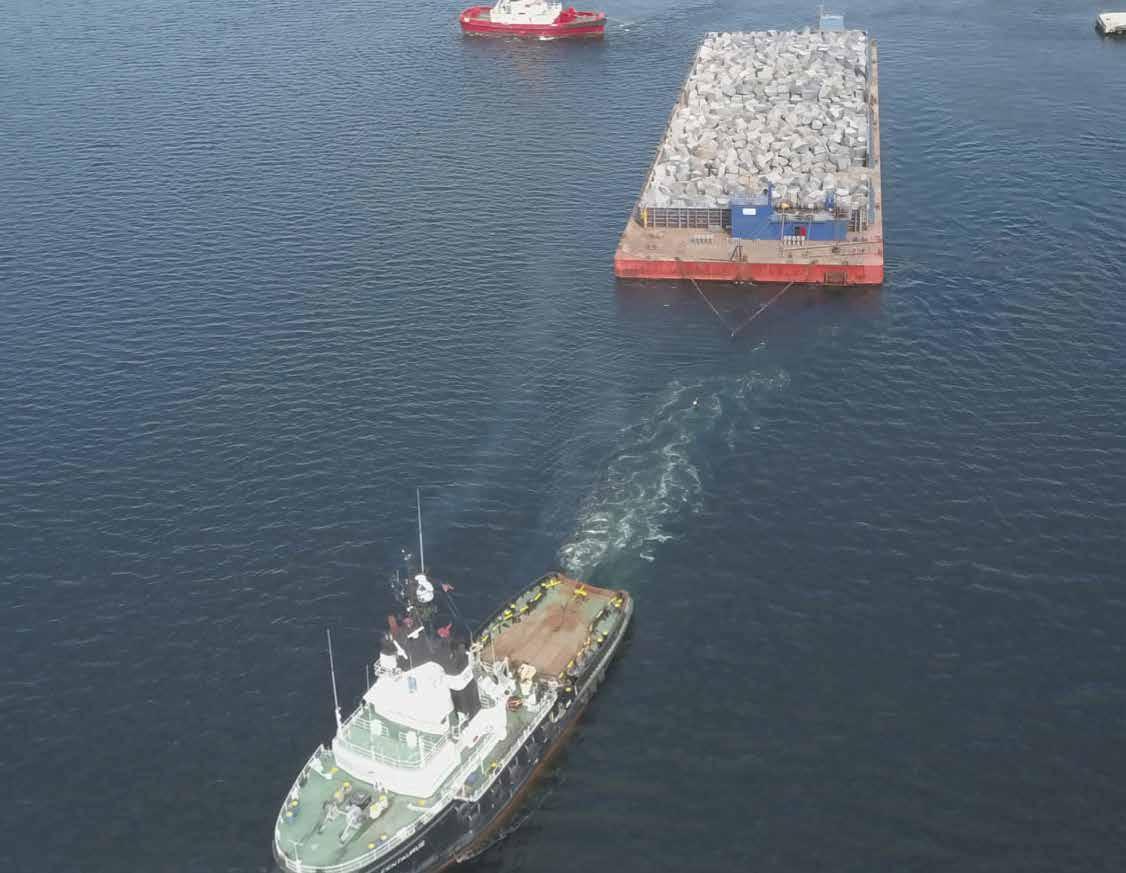
rem”, for and against persons generally, the decision also applied as against non-parties to the original limitation proceedings, including Costain and Network Rail.
2. A limitation claim can be a substantive claim for the purposes of cause of action estoppel. Stema UK was therefore now debarred by cause of action estoppel from running the Article 1(4) point again. The crucial point was that Stema UK claimed a declaration that it is entitled to limit “pursuant to section 185 of the Merchant Shipping Act 1995” and the Court of Appeal held that it is not entitled to limit at all.
3. Pursuant to the 1843 case of Henderson v Henderson, just because a point could have been raised earlier does not make it abusive to raise it now. What is necessary for “abuse” is that the point “could and should” have been raised earlier - such that that the later raising of the challenge is abusive. The judge held that both the “could” and “should” requirements were satisfied in this case. While this was not
a classic case of harassment or oppression, it would be an abuse for Stema UK to seek to advance an alternative case based on Article 1(4) now.
As the judge in this case recognised, a party seeking to invoke the right to limit liability can do so in two ways. They can either wait for a liability claim to be formally commenced against them and then plead the right to limit under the Limitation Convention as a defence, or they can commence limitation proceedings by issuing a limitation claim form seeking a declaration of the right to limit under the Limitation Convention.
However, for the reasons set out above, what Stema UK could not do in this case was subvert a court order obtained after 3 years of litigation focused solely on limitation by trying to revive limitation as a defence in the liability proceedings.

Donal Keaney , partner, and Reema Shour , (right) professional support lawyer, Hill Dickinson, analyse the implications of a recent UK Court of Appeal decision on the application of the Insurance Act 2015 to a marine liability policy. They argue that the case underlines the need for care to be taken in drafting the wording used in an insurance policy to ensure that the scope and extent of cover is as required
The Insurance Act 2015 (IA 2015) came into force in August 2016 and was aimed at modernising and updating English law on non-consumer insurance contracts to reflect changing market practice in the modern insurance industry. Having undertaken a review of English insurance law, which was primarily codified in the Marine Insurance Act 1906, the Law Commission had decided reform was necessary. However, the extent to which the IA 2015 would impact the insurance sector was going to depend on the way in which the English courts interpreted and applied its provisions going forward.
Notwithstanding the passage of almost 9 years, there has not developed a significant body of case-law which stakeholders in the insurance business can usefully consult for guidance on how the provisions of the IA 2015 operate. Therefore, a recent Court of Appeal decision, Lonham Group Ltd v Scotbeef Ltd & another [2025] EWCA Civ 203, is a welcome addition to the existing body of law. The case is particularly noteworthy because it provides the first English appellate authority on how and when the information provided by an assured to its insurer prior to inception of the policy will constitute a warranty, rather
than a representation. Different considerations and different consequences come into play depending on this distinction.
A detailed review of the relevant provisions of the IA 2015 is beyond the scope of this article. In summary, however, under Part 2, s.3 of the IA 2015, the assured has a duty of fair presentation of risk with regard to the information that the assured discloses to the insurer before entering into the insurance contract.

Where the assured breaches this duty of pre-contractual disclosure then, if the underwriter would not have entered the insurance contract at all had there been no breach or would have entered it on different terms, a range of remedies will be available to the insurer depending on the scale of the breach.
In the past, a “basis of the contract” clause could convert a representation into a contractual warranty and a breach of warranty would discharge the insurer from liability for all the risks covered by the insurance contract from the time of the breach. This was so even if the warranty had no bearing on the risk.
Now, under Part 3, ss 9 to 11 of the IA 2015, instead of discharging liability, a breach of warranty results in suspension of the insurance cover until the breach is rectified, whereupon cover is reinstated. Essentially, “basis of the contract” clauses are no more.
The dispute arose out of a marine liability policy whereby the insurer provided its assured with insurance cover for warehousekeepers’ legal liability.
The assured provided warehouse facilities for chilled and frozen goods and entered into an agreement with a customer to freeze and store its meat products at its facilities.
Pursuant to the insurance policy, the assured was obliged to trade under certain recognised trade body standard terms and conditions or equivalent (where approved by the underwriter) primarily because such terms and conditions normally incorporated limitation provisions and time limits for notifying claims. Such terms would, therefore, impact the level of risk undertaken by the insurer in the policy.
The customer subsequently brought a claim for damage sustained by its products while stored at the assured’s facility. The assured argued that in its agreement with the customer, it had incorporated approved trade body standard terms and conditions which imposed a liability cap, as well as a time limit that meant the customer’s claim was timebarred.
The High Court disagreed and found that the standard terms had not been effectively incorporated into the parties’ agreement and could not be relied on. Thereafter, the assured went into liquidation and the customer sought to be
“The case is particularly noteworthy because it provides the first English appellate authority on how and when the information provided by an assured to its insurer prior to inception of the policy will constitute a warranty, rather than a representation.”

indemnified directly by the insurer for its losses under the Third Parties (Rights against Insurers) Act 2010.
In simple terms, this legislation provides for the rights of third parties against insurers of insolvent assureds against whom the third party has a claim that is covered by the insurance policy. However, the third party is restricted to the terms of the policy and the insurer can rely on any defences it has against the assured.
The underwriter denied the claim on the basis that it was entitled to avoid the policy because the assured had failed to comply with a condition precedent in the policy by failing to ensure its agreement with the customer was on approved trade terms and conditions.
The High Court found in favour of the customer. The Court of Appeal has now reversed that decision and found in the insurer’s favour. Its view was that the High Court had made an error in considering the different provisions under the policy’s “duty of assured” clause together and on an “all or nothing” basis rather than addressing the sub-clauses separately.
The Court of Appeal decided that two out of the three
sub-clauses were warranties and, on the wording of the policy, were clearly conditions precedent. The policy expressly stated that breach of a condition precedent allowed the insurer to avoid the whole claim. None of the exceptions to avoidance of liability for breach of warranty specified in the relevant provisions of the IA 2015 applied. Therefore, the insurer was entitled to avoid the policy.
The Court of Appeal also dismissed arguments that the insurer was in breach of its duty of transparency under s.17 IA 2015, which requires an insurer to take sufficient steps to draw an assured’s attention to any disadvantageous term in the policy before the insurance contract is concluded. As the relevant sub-clauses did not put the assured in a worse position than it would have been in anyway, s.17 did not come into play.
The decision highlights that it is important to be careful in drafting the wording used in an insurance policy to ensure that the scope and extent of cover is as required. A carefully worded policy can effectively limit the risk undertaken by the insurer without conflicting with the requirements of the IA 2015.
3 July 2025 in association with
Launched in 2019, Energy Insurance London attracts over 300 senior members of the energy insurance sector and mainly focuses on Renewables and Oil & Gas. Recent years have seen the popularity of renewables dominate the conference agenda, along with the overarching theme of energy transition.







Co ee break: 10.20-10.50 & 14.55-15.20 Lunch: 12.30-13.30 17.10: Closing Drinks Reception
08.55-09.00 Welcome Address: Daniel Creasey, Managing Director, Cannon Events
09.00-09.20
Presenter: Mike Gosselin, UK & Lloyd’s CUO, AXA XL agenda
09.20-10.10
Keynote Address: Transforming Tomorrow: Pioneering Innovative Risk Strategies for a Sustainable Energy Future
Panel Discussion: Back to the Future – State of the Market
The insurance market has regular cycles, so in this session we consider the current state of the energy market and the likely direction of travel for the year ahead, given the geopolitical upheavals and consequences for insureds. We also consider whether London is maintaining its lead in this market, or whether insureds are choosing other locations in which to place their business.
10.00-10.20
Fireside Chat: A Changing World – Energy Transition
Participant: Dele Fajimolu, Senior Executive, Technical Underwriting, Lloyd’s Market Association
10.50-11.30 Panel Discussion: The Trump E ect and “Drill Baby, Drill”
Moderator: Rod Rennison, Senior Vice President, Rimkus
Panellists: Mirdul Anahat, Senior Underwriter, Downstream Energy and Power, AXA XL
11.30-11.50
Presentation: Terms at Your Fingertips – Implications for the Open Market
An increasingly common event is the broker facilitation arrangement, which gives them instant access to as much as 30% of the placement that they need. The question is, does this then limit the open market and is this a dangerous trend which may in time restrict the options for insureds and shrink the overall market?
11.50-12.10 Presentation: A Silver Anniversary for Welcar
Welcar is celebrating its 25th birthday this year, so in this presentation we take a look back at those 25 years and ask if the wording is performing and how it has changed through the years. We will also consider the informal ‘Windcar’ and ask whether it is time for a formal arrangement to match Welcar. ureds and shrink the overall market?
12.10-12.30 Fireside Chat: Keeping the Supply Chains Safe
We discuss the changing nature of energy supply chains and the new threats, covering everything from geopolitical tensions to sabotage and genuine accidents. We look at how the threats vary from fossil fuels to renewables and discuss the ways in which insurance can play its part.
13.30-13.50
Presentation: Claims on the Rise (again)
Claims inflation has become a pernicious reality of the insurance market as every element of the claims process is now costing more, so whether it is a market changing event or the continuous attritional losses, the overall impact on the insurers’ books is the same – it costs more. We look at this year’s trends and the concerns for the year ahead.
13.50-14.10 Presentation: Capturing the Carbon Opportunity
The UK has just licenced two carbon capture clusters, so in this presentation we hear more about these clusters and the new opportunities for insurers. We look at how carbon is being stored and what it could mean in terms of claims.
STREAM 1 - OIL & GAS
14.15-14.35
Presentation: Building for the Future
Construction on fossil fuel projects is booming across the world, so in this presentation we hear where those hotspots are and what opportunities they present for insurers, alongside the potential downside of expensive and logistically di cult claims.
Presentation: TBC
14.35-14.55
Construction on fossil fuel projects is booming across the world, so in this presentation we hear where those hotspots are and what opportunities they present for insurers, alongside the potential downside of expensive and logistically di cult claims.
15.20-16.00
Panel Discussion: Keeping it Clean
In this panel, we analyse what that means for insurers and consider two recent cases that have reached the courts in the US. We also explore the litigation environment in the US and see how far climate activists have got in their recent attempts to hold fossil fuel interests accountable for climate change.
16.15-16.30
Presentation: A Thawing in Arctic Waters?
We discover the latest news in terms of Arctic development. Has the Trump administration paved the way for a new wave of exploration in the region? And can such developments ever be compatible with the drive towards renewable energy and environmental conservation elsewhere in the world?
16.30-17.10
Presentation: Aging, a Natural Part of Life?
As wells come to the end of their natural life, the question for the authorities is what to do with them, particularly as there are zombie wells with no obvious owners. The risk of oil spills is magnified, but there is not necessarily an owner (or an insurer) to pick up with bill.
STREAM 2 - RENEWABLES
Presentation: Modelling the Climate Change Risk Environmental Social Governance (ESG) criteria are increasingly being used to inform strategic goals, operational execution and the reporting of sustainable business practices to key stakeholders. There is, however, considerable uncertainty surrounding the associated emerging risk implications, which could lead to areas of opportunity or threat.
Case Study: A Problem to be Solved – Batteries
Battery storage remains a challenge. Insurers can all point to the recent and very costly fire in Moss Landing, California as an example of what can go wrong. We look at this example to see how and what insurers can do with their insureds to help reduce the risks for the future.
Presenter: John Colquhoun, Director, Rimkus
Panel Discussion: The Burden of Proof
In this panel discussion, we ask about the burden of proof and how the insurance market can interpret that to establish exactly what is covered. We also consider how the market will react going forward and whether there will ever be any consistency of cover. We do this through the lens of the Nord Stream case.
Panellist: Robert Bates, Partner, NARDAC
Presentation: End of Life Not Always End of Use
In a world where the pressure is on to ensure everything is recyclable, there has been an issue with some of the renewable energy infrastructure. In this presentation, we hear of the latest developments in terms of recycling that infrastructure and ask whether this potentially creates a market for insurers.
Presentation: Blowing in the Wind
With the outbreak of the Russia-Ukraine war, plenty of armchair pundits were predicting a surge in renewable projects as countries looked for greater energy security. Now, we take a look back and at the present day to see how many of the predictions came true and consider the reality on the ground to see what the true barriers to develop have been, from costs to nimbyism.
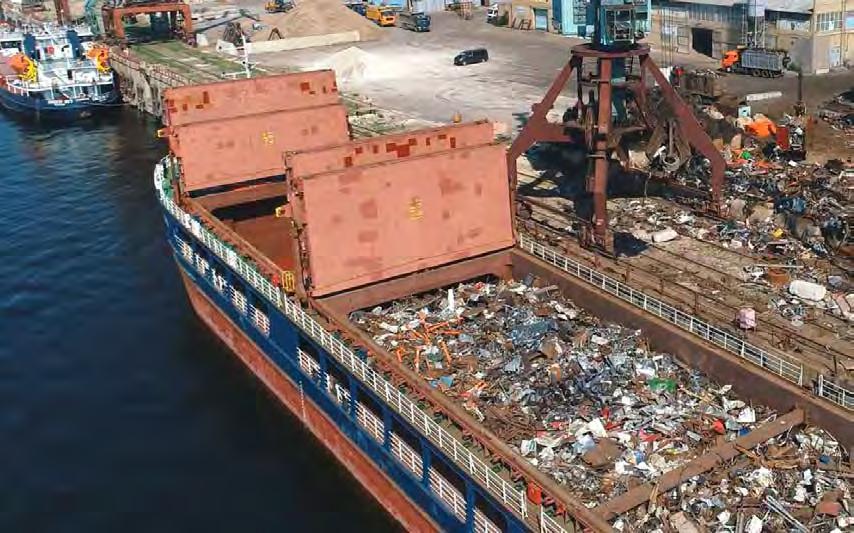

Mark Russell , vice president, head of cargo claims at Gard asks whether the IMSBC code adequately addresses the risks in the case of scrap metal fires that continue to grab the headlines
The global scrap steel market is forecast to jump to more than one billion metric tons by 2033 as part of increased expectations for waste recycling in the green transition. The size of individual scrap cargoes has also been increasing as scrap facilities grow in size and consolidate exports at major facilities. This means that much larger bulk carriers are now loading scrap cargoes. In one Gard case the cargo was more than 40,000 m/t across five holds. Smaller vessels continue to load from facilities with draft restrictions and which may be close to populated areas.
Most of Gard’s cases and those reported in accident investigations appear to concern scrap metal declared by shippers as Group C, which under the IMSBC Code is cargo which is neither liable to liquefy (Group A) nor to possess chemical hazards (Group B).
Images and accounts of scrap metal fires associated with such non-hazardous declarations paint a more concerning risk picture. Accident investigation reports record rapidly developing fires with intense heat and heavy smoke threatening harm to the crew, shore fire fighters as well as local residents.
Some fires have taken days to extinguish and in one Gard case the temperatures reached in the hold were sufficient to melt the tank top. In another reported case the vessel sank at the berth leading to pollution. In some fire cases a cargo recycled from waste was returned to waste with large quantities of contaminated fire-fighting water that needed to be disposed of.
As mentioned in our earlier article on the safe handling and
“In one accident report an experienced representative of the scrap facility highlighted to investigators the fire dangers associated with lithium-ion batteries and their increasingly prolific use: “It’s becoming more of a problem every month, every year in our industry.”
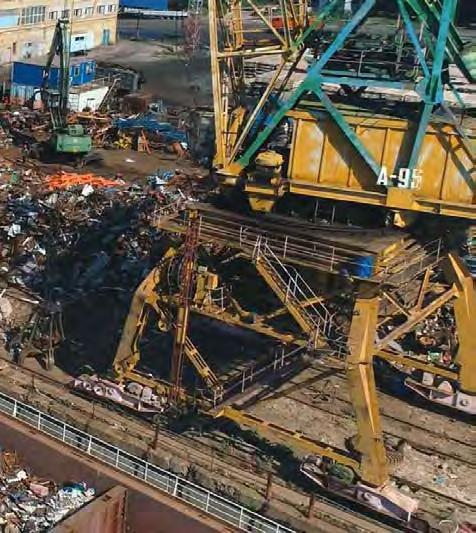
carriage of scrap metal in bulk there are two main categories of scrap metal covered in the IMSBC Code. These are scrap metal (Group C) and ferrous materials in the form of iron metal borings, shavings, turnings or cuttings (Group A). The Scrap Metal Group C schedule states under Hazard:
“No special hazards. Low fire risk except when cargo contains swarf (fine metal turnings liable to spontaneous combustion) refer to the entry for FERROUS METAL BORINGS, SHAVINGS, TURNINGS or CUTTINGS UN 2793 in this Code”
That means only scrap metal cargoes containing such borings, shavings, turnings or cuttings are considered a fire hazard requiring a Group B declaration with extra precautions to be taken including temperature monitoring prior to and during loading. The Group B Hazard states:
“These materials are liable to self-heat and ignite spontaneously, particularly when in a finely divided form, wet or contaminated with such materials as unsaturated cutting oil, oily rags and other combustible matter”.
It is, however, apparent from several serious scrap metal fires involving Group C declarations that the cargoes contained
quantities of combustible and/or potentially hazardous foreign materials, such as batteries, rubber, plastics, wood, foam, oils/greases, gas bottles and rags that do not qualify for Group B status.
In one accident report an experienced representative of the scrap facility highlighted to investigators the fire dangers associated with lithium-ion batteries and their increasingly prolific use: “It’s becoming more of a problem every month, every year in our industry”.
The same investigation pointed to scrap industry guidelines calling for all grades to be free from foreign materials, save for negligible amounts. It is apparent from reported cases and some of Gard’s cases that there was limited screening of scrap sourced from public and commercial recycling facilities in preparation for shipment.
A key question is whether the IMSBC code is adequately addressing the risks of scrap metal fires. A review of the schedules may consider a widening of the Group B definition. It should be recognised that crew may find it difficult to detect foreign material and so rely on shippers’ screening controls for removing hazardous materials to acceptable levels.
It is also of note that the Group B schedule recommends compacting the cargo during loading (to reduce the amount of air to support combustion). Accident reports point to this very process of compacting as the likely trigger of some fires and most do indeed occur during or shortly after loading.
Lithium-ion batteries that have sufficient charge and become mechanically damaged can undergo a thermal runaway process which can result in a flammable electrolyte being ejected from the cell casing and being ignited by the heat generated within the battery. By this process lithium-ion batteries can become a potent ignition source.
Both scrap schedules also state that “This cargo shall be kept as dry as practicable before loading…” since wetting increases the self-heating risk, but keeping scrap dry is impractical since it is largely stored outdoors, and water is sometimes used for dust suppression.
The schedules might also be improved in relation to “emergency action in the event of fire” which only applies for Group B cargoes and cautions against use of water unless in port where copious amounts may be used, stability permitting. If cargo over-heating or a fire situation is developing at sea the advice is to batten down and the schedule references the effectiveness of early application of inert gas.
Similar considerations may be relevant in the early stages of all scrap fires also in port. As mentioned above, most of the fires occur during loading and shore fire fighters will often turn up to take charge but often with a lack of ship knowledge. In the absence of expert advice on ship fires, the situation may be made even worse.
Ballinger & Co. is authorised and regulated by the Financial Conduct Authority under the Payment Services Directive as an Authorised Payment Institution with registration number FRN 825771.
Ballinger & Co. is a leading specialist in Foreign Exchange. We deliver FX risk management strategies and trading services to corporates and institutions. Through superior pricing and execution, improved transactional efficiency and deep market knowledge we provide each of our clients with an essential competitive advantage. E: info@ballinger.co T: +44 (0) 20 3869 1800




Captain Deha Aydin , marine consultant with law and consulting firm
Esenyel Partners delves into Turkiye’s ship recycling industry, examining its economic importance, the environmental challenges it faces, the regulatory framework in place and the future prospects for its growth and sustainable development
Ship recycling plays a vital role in the global maritime industry by facilitating the responsible disposal of aging vessels and enabling the recovery of valuable materials, such as steel, copper and aluminum. This process not only reduces waste but also contributes to the conservation of natural resources. Among the world’s leading nations in this sector are Turkiye, India, Bangladesh, Pakistan and China, with Turkiye standing out as a key player in sustainable ship dismantling. By employing increasingly ecofriendly methods, Turkiye is reducing environmental harm and promoting circular economy practices.
Ship recycling is a critical component in advancing sustainability within the maritime industry. With ships typically having a service life of 20 to 35 years, the inevitable end-of-life dismantling process offers an opportunity for responsible material recovery. Recycling ships provides an environmentally sound solution by reclaiming valuable materials such as steel, aluminum and copper, thereby decreasing the need for virgin resources.
This process not only helps conserve finite natural resources but also ensures the safe and compliant disposal of hazardous substances, including asbestos, oil residues and heavy metals, which could otherwise pose significant environmental and public health risks if improperly managed.
The environmental advantages of ship recycling are substantial. For instance, the recovery of scrap steel alone yields significant reductions in resource consumption and environmental impact. It saves up to 74% of energy, conserves 90% of raw materials, reduces water usage by 40%,
minimises wastewater discharge by 76%, curtails air pollution by 86% and reduces mining waste by 97%. These statistics underscore the pivotal role of ship recycling in driving a circular economy within the maritime sector, fostering a sustainable, resource-efficient and eco-conscious industry.
TURKIYE’S SHIP RECYCLING INDUSTRY
Turkiye has become a major player in the global ship recycling market, with its main facilities located in Aliağa. The country’s ship recycling industry is known for its adherence to international environmental and safety standards, such as the Hong Kong Convention (HKC) and the EU Ship Recycling Regulation.
Turkiye stands out for having skilled labour, a strategic location close to Europe and a well-developed infrastructure. Additionally, it is the only Mediterranean country and the only OECD member with a developed ship recycling industry. Turkiye’s shipbreaking yards are recognised for responsible practices, contrasting with the poor conditions seen in some South Asian yards.
As shown in the provided statistics (below), in 2023 Turkiye ranked third in global ship recycling, with 132 ships dismantled, after Bangladesh and India. The total number of end-of-life vessels dismantled in Turkiye has steadily increased since 2009. This position underscores Turkiye’s significant role in the industry, bolstered by its focus on environmental responsibility, modern facilities and strategic location. The ranking highlights Turkiye’s ability to maintain its standing as a leading ship recycling destination, attracting environmentally conscious shipowners looking for compliance with international standards.
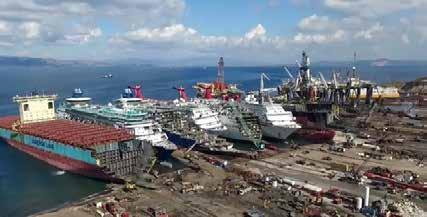
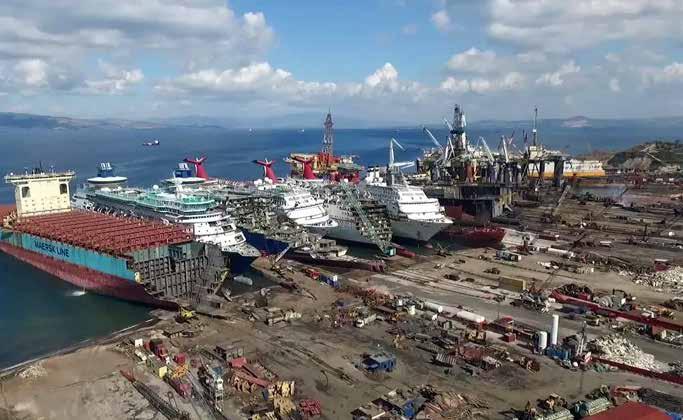
The ship recycling industry in Turkiye provides significant economic benefits, including job creation and revenue generation. The industry directly employs thousands of workers and supports ancillary industries such as steel manufacturing, transportation and waste management. Recycled steel from shipbreaking contributes to Turkiye’s steel production, reducing the country’s dependence on iron ore imports. Additionally, shipowners from Europe prefer Turkish yards because of their proximity and compliance with EU regulations, enhancing Turkiye’s competitiveness in the sector.
While ship recycling offers economic benefits, it also poses significant environmental and health risks. Ships contain hazardous materials such as asbestos, polychlorinated biphenyls (PCBs), lead and mercury, which can have detrimental effects on both workers and the environment if not managed properly. Turkiye has made considerable progress in mitigating these risks by implementing stringent environmental and safety regulations.
The implementation of the Hong Kong International Convention (HKC) for the Safe and Environmentally Sound Recycling of Ships represents a significant milestone in enhancing industry standards. Additionally, Turkish ship recycling facilities hold certification under the European Union’s Ship Recycling Regulation (EU SRR), which ensures environmentally sustainable recycling methods.
“The future of ship recycling in Turkiye looks promising, with increasing global attention on sustainability and responsible disposal practices. As shipowners aim to meet international environmental standards, the demand for eco-friendly recycling solutions is expected to grow. Turkish yards are well-positioned to benefit from this trend due to their adherence to EU and HKC regulations.”
These regulations demand that recycling yards have efficient waste management practices, provide necessary protective equipment for workers and follow strict dismantling procedures to reduce pollution and protect the environment. This approach promotes safe, sustainableand eco-friendly ship recycling.
Turkiye’s ship recycling industry is frequently compared to South Asian nations such as India, Bangladesh and Pakistan. Although these countries lead the market in terms of volume, they are often criticised for poor working conditions, inadequate safety measures and environmental
harm. In contrast, Turkish recycling yards adhere to more stringent regulations and are praised for their safer and more eco-friendly recycling practices.
Another key advantage of Turkiye’s ship recycling industry is its proximity and accessibility to European shipowners. Owing to stringent EU regulations, many European shipowners opt to recycle their vessels in Turkiye rather than in South Asia, where regulatory enforcement is less stringent. As a result, Turkiye has become a preferred destination for shipowners seeking high-quality and environmentally responsible recycling solutions.
Despite its numerous advantages, Turkiye’s ship recycling industry encounters several challenges. One of the primary challenges is the increasing competition from South Asian shipbreaking yards, which can offer lower prices because of cheaper labour and more relaxed regulations. Furthermore, fluctuating steel prices and global economic downturns can impact the profitability of ship recycling yards.
Another challenge is the continuous need for technological advancements and improvements in infrastructure. With environmental regulations becoming increasingly strict, Turkish shipyards must consistently invest in cleaner and safer recycling technologies to maintain their competitive edge. Moreover, attracting skilled labour and ensuring worker safety remain vital concerns, necessitating ongoing training initiatives and investments in protective equipment.
The future of ship recycling in Turkiye looks promising, with increasing global attention on sustainability and responsible disposal practices. As shipowners aim to meet international environmental standards, the demand for eco-friendly recycling solutions is expected to grow. Turkish yards are well-positioned to benefit from this trend due to their adherence to EU and HKC regulations.
A promising opportunity for growth in Turkiye’s ship recycling industry lies in the development of a circular economy. This involves maximising the recovery of materials and components from decommissioned ships, allowing for their reuse in other industries or for new purposes. By focusing on this approach, Turkiye can significantly enhance the sustainability of its ship recycling sector, reducing the need for new raw materials and decreasing environmental impact. Furthermore, integrating digital technologies could further elevate the performance of Turkiye’s ship recycling yards. The implementation of automated dismantling systems, for instance, could streamline the disassembly process, improving both speed and safety while minimising waste generation.
Advanced waste tracking systems would enable better monitoring and management of materials throughout the recycling process, ensuring compliance with environmental regulations and helping to reduce the risk of pollution.
“The environmental advantages of ship recycling are substantial. For instance, the
recovery
of scrap steel alone yields significant reductions
consumption
in resource
and environmental
impact.
It saves up to 74% of energy, conserves 90% of raw materials, reduces water usage by 40%, minimises wastewater discharge by 76%, curtails air pollution by 86% and reduces mining waste by 97%.”
Together, these technological advancements have the potential to greatly improve operational efficiency, reduce environmental impact and position Turkiye as a leader in the global ship recycling industry.
Government support and policy incentives will also be essential in driving the growth and sustainability of Turkiye’s ship recycling industry. Building on the potential of a circular economy and the integration of digital technologies, targeted investments in research and development can help foster innovation within the sector. Tax incentives for eco-friendly practices, alongside international collaborations, could further support the adoption of automated dismantling systems and advanced waste tracking technologies, ensuring that Turkish shipyards stay at the forefront of sustainable practices.
Turkiye’s ship recycling industry is a key player in the global maritime sector, offering environmentally friendly disposal solutions for retired vessels while also contributing to economic growth. With its advantageous location, solid regulatory framework and commitment to high environmental and safety standards, Turkiye has established itself as a responsible and competitive participant in the industry.
However, challenges such as competition from South Asia, fluctuating steel prices and the need for technological improvements must be addressed for long-term success. By continuing to focus on sustainable practices and innovation, Turkiye can further strengthen its position as a leader in ecoconscious ship recycling. Additionally, government-backed initiatives would not only enhance operational efficiency but also reinforce Turkiye’s position as a global leader in environmentally responsible ship recycling. By aligning policy with the industry’s growth potential, Turkiye can ensure continued progress towards a more sustainable future.



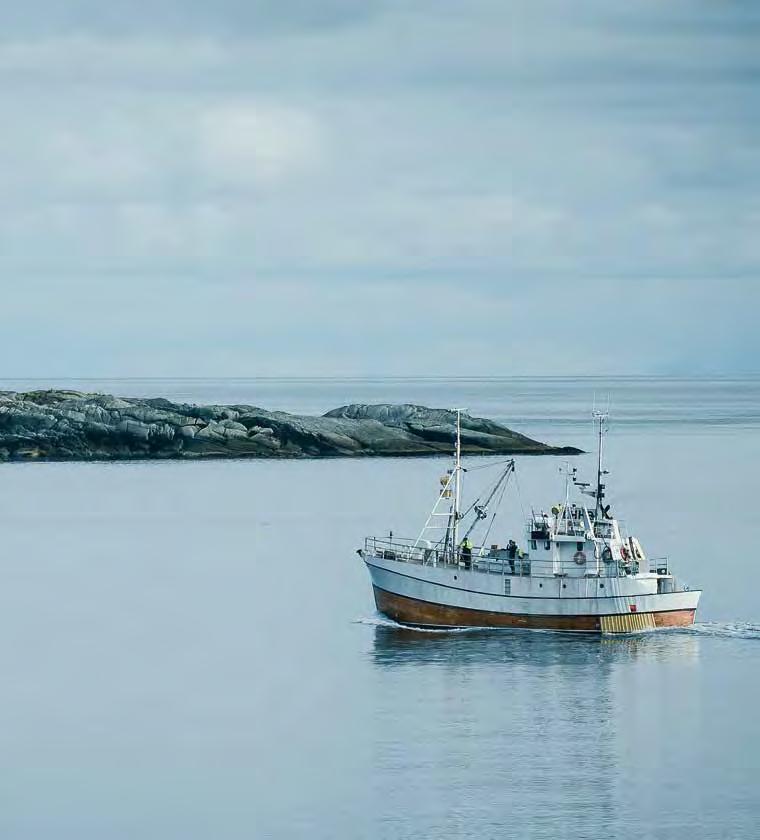


Tony Paulson , head of Asia and corporate director at West of England P&I Club, explains why existing liability regimes may not be fit for purpose in shipping’s energy transition
The maritime industry is adopting alternative fuels to meet the IMO’s 2050 decarbonisation targets. Methanol, ammonia, LNG (liquefied natural gas) and hydrogen are leading newbuild orders, with alternative fuel-capable vessels surpassing 2,000 in 2024.
However, while shipping companies and fuel suppliers advance, liability and compensation frameworks that were developed for hydrocarbon spills will be of limited use where spills of these alternative fuels are concerned.
This challenge is particularly relevant in Asia, a key hub for alternative fuel development, with Singapore leading regulatory and infrastructure advancements.
A crucial question remains: can existing liability and compensation mechanisms address the new risks posed by alternative fuel spills, or must the industry wait for a catastrophic event to drive regulatory reform?
For decades, the industry has managed bunker oil spills using well-established conventions and response measures. While traditional oil spills often have an environmental impact, those impacts are well understood. Clean-up techniques and liability mechanisms have been developed through the decades to address these impacts and ensure the efficient payment of compensation for the victims of spills. Alternative fuels, however, present different challenges.
Ammonia is highly toxic to human health and poses significant health hazards for ships’ crews, port workers and responders. Methanol is highly flammable and along with fuels such as LNG and hydrogen, create risks of fire and explosion.
Unlike oil, these fuels do not leave a visible slick on the water and so traditional techniques such as containment booms and skimming operations are ineffective. Responders may also lack training or protective equipment for gaseous or toxic leaks.
A spill of one of these substances in a port or at a bunkering terminal could create flammable or explosive conditions, potentially leading to toxic gas dispersion, respiratory injuries and operational shutdowns.
To address these kinds of new risks, the Maritime and Port Authority of Singapore is taking proactive steps, setting
an example for regulators worldwide. Asia’s prominence in alternative fuel adoption highlights the importance of regional efforts. Likewise, the UK has conducted tabletop drills to simulate alternative fuel spill responses, highlighting industry preparedness efforts.
The international maritime liability framework for spills is built around hydrocarbon-based pollution. Key conventions include the 1992 Civil Liability Convention and Fund Conventions, which apply to persistent oil spills from tankers. The 2001 Bunkers Convention covers bunker oil spills from non-CLC tankers but is again limited to hydrocarbon fuels. The HNS Convention, developed in 1996 with a 2010 protocol, will cover hazardous and noxious substance (HNS) spills when it enters into force but only applies to cargo, not bunker fuels.
So, none of these conventions apply to liabilities arising from an escape of alternative fuels used as bunkers. This lack of a comprehensive liability and compensation framework poses significant challenges for claimants.
Under the existing system, claimants benefit from strict liability, ensuring compensation is payable by the spilling vessel regardless of fault. The insurer is directly liable if the shipowner cannot pay and pure economic loss - normally unrecoverable without accompanying physical damage - is allowable.
These protections, however, may not apply to alternative fuel spills, which will be governed by the local law in the place where the spill occurs. Instead, claimants will most likely be required to establish negligence and attempt to secure their claim against the responsible parties’ assets.
The lack of a liability compensation regime for alternative fuel spills may therefore make recovery difficult for
“Historically, the maritime industry has often been moved to address regulatory gaps only after major disasters. The Torrey Canyon oil spill in 1967 led to the development of the CLC/Fund regime and modern oil pollution liability frameworks, while the Exxon Valdez in 1989 did the same for the US.”
claimants. This will be the case especially if the ship - often the shipowner’s primary asset in the jurisdiction - has been destroyed or lost.
For the shipowner, since any limitation will be a function of the local legislation, there may be instances where it is not possible to limit for these kinds of liabilities, meaning shipowners could face unlimited liability in some instances (though it should be noted that the same may be true today for hydrocarbon bunker spills governed by the Bunkers Conventions).
Thankfully, despite the lack of any global liability and compensation framework for alternative fuel spills, the resulting liabilities are nevertheless insured by a shipowner’s P&I Club in exactly the same way as when these same commodities are carried as cargo. The International Group of P&I Clubs (IG Clubs) have the financial resources and deep expertise to be able to deal with these kinds of events.
Historically, the maritime industry has often been moved to addressed regulatory gaps only after major disasters. The Torrey Canyon oil spill in 1967 led to the development of the CLC/Fund regime and modern oil pollution liability frameworks, while the Exxon Valdez in 1989 did the same for the US.
It is surely in the interests of all to avoid this happening for alternative fuels and to avoid having to wait for some catastrophic event which might entail loss of life or significant property damage before a comprehensive framework is developed.
Recognising this, the IG Clubs’ alternative fuels working group is engaging with the IMO and policymakers. However, viable solutions are not straightforward.
One option is amending the Bunkers Convention by expanding the definition of bunker oil to include any propulsion fuel. This approach aligns with the existing framework, but the convention’s definition of pollution damage fails to address economic losses or human injury.
Another approach is expanding the HNS Convention, which allows claims for personal injury and economic loss but currently only covers cargo spills. This would provide a broader liability framework encompassing alternative fuels but would require extensive amendments and political negotiation, delaying implementation.
A third option is creating a new alternative fuel spill convention, which would provide a comprehensive, futureproof solution. However, developing and ratifying a new IMO convention could take many years.
The rapid uptake of alternative fuels demands regulatory preparedness. If history has shown anything, it is that
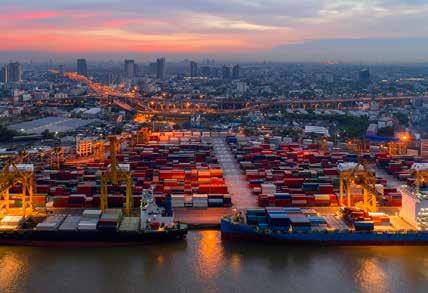
“With Asia accounting for a significant share of global tonnage and maritime trade, the region has an important role in shaping alternative fuel policies. Singapore, Hong Kong and China are setting regulatory benchmarks, but without a global liability framework, inconsistencies will persist.”
reactive policymaking comes at a cost. While insurers and industry leaders work to fill immediate gaps, a long-term liability framework must be developed before a crisis forces the industry into emergency action.
The solution requires collaboration between regulators, insurers and shipowners. We are actively leading discussions on regulatory preparedness, working with industry stakeholders to address liability gaps and develop a cohesive framework for alternative fuel spill management.
With Asia accounting for a significant share of global tonnage and maritime trade, the region has an important role in shaping alternative fuel policies. Singapore, Hong Kong and China are setting regulatory benchmarks, but without a global liability framework, inconsistencies will persist.
By proactively shaping international standards, the industry can ensure alternative fuel spills are managed effectivelybefore the first major disaster dictates the terms of reform. Ensuring that crew preparedness and training align with new fuel handling requirements will also be key to preventing accidents before they occur.


Plant pathologist, James Townsend , uses blueberry cargo transport as an example to explain the complexities of identifying the causes of spoilage in fresh produce transit incidents
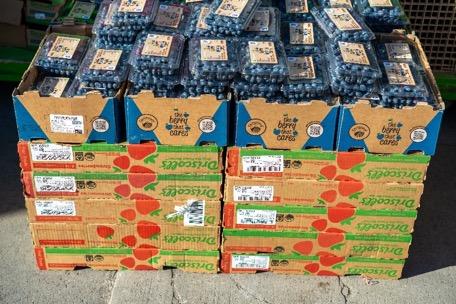
To minimise handling, growers are increasingly picking berries directly into branded clamshell retail punnets
Blueberries are a popular ‘superfruit’ with global consumption continuing to increase.
In 2023, more than 45% of world production was exported. Blueberries can have a shelflife of up to three months and can be stored below 5°C for up to seven weeks, making them suitable for long-distance transport. However, when a container of blueberries reaches its destination, there could be a ‘case of the blues’ if they have spoilt in transit. In these cases, a forensic investigator can determine where in the supply chain things have gone pear-shaped.
Optimising a long shelf life starts with good crop husbandry to control pests and diseases. In hot climates, the crop is grown under shade netting, protecting the fruit from sunscald, with polytunnels used to prevent damage by heavy rain or hail in wetter climates.
Blueberries should be picked at the 85%–90% blue stage in
“When faced with a container of spoilt blueberries, it can be daunting for the owner to ascertain how best to understand the root cause and whether the damage is a result of problems during growing, storage or transportation of the crop.”
dry conditions in the morning, before heat builds up in the fruit. High humidity at harvest promotes rots and moulds and berries picked at more than 90% blue stage have a shorter shelf life. Once picked, blueberries should be cooled within five hours because high temperatures accelerate fruit degradation.
Blueberries are sometimes harvested into crates in the field, but frequent handling removes wax from the skin. This reduces the nutritional quality, accelerates water loss and speeds decay. To minimise handling, growers are increasingly picking berries directly into branded clamshell retail punnets.
After harvest, blueberries remain metabolically active, so respiration, ripening and cell aging continue.
Upon arrival at the packing facility, the temperature of the berries should be lowered to near 0°C by forced cooling immediately. Temperatures below 2°C for 96 hours kill fruit fly eggs and render mould spores inactive. Care is needed though. Insufficient cooling reduces shelf life, but, temperatures below 0°C increase chilling injury risk to the berries.
Like many fruits, some blueberry varieties ripen when exposed to the ripening hormone, ethylene. Knowing which variety is being shipped is important, as removing ethylene from storage air can delay their ripening. Ethylene absorbing sachets can help, but add cost.
Controlled atmosphere transport involves increasing carbon dioxide (CO2) and decreasing oxygen concentrations in an airtight container. Some ‘reefer’ (refrigeration) systems offer a CO2 injection option, allowing containers to be pre-charged to 15% CO2 for blueberries. The auxiliary supply automatically tops up CO2 during transit. However, CO2 supply failure can lead to increased metabolic activity and subsequent fruit breakdown.
Modified atmosphere packaging initially alters the

atmosphere inside the pack, but it changes over time. A range of perforated bags are available from manufacturers to wrap entire pallets or individual crates. It is important to use the correct wrapping to avoid losses.
Active packaging changes the condition of the atmosphere to extend shelf-life. Sodium metabisulphite pads release sulphur dioxide (SO2) gas, which kills fungal spores, sanitises small wounds on the fruit surface and maintains the relative humidity within the package at around 89%.
The pads must be placed on top of pallets before wrapping, as SO2 is heavier than air. In addition, the pad must not be allowed to come into direct contact with the blueberries because it is toxic to plant material. Incorrect positioning of these pads can cause mould spoilage or skin bleaching.
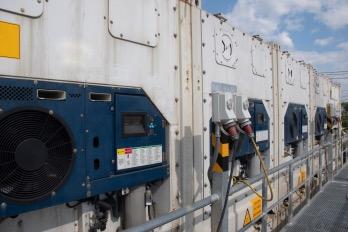
Correct mould or pest identification helps establish liability in the event of a claim.
More than a dozen moulds can affect blueberries, and an increase in temperature above 2°C stimulates spore germination, initiating irreversible fungal growth, spoiling the shipment.
Some moulds, such as Anthracnose (Colletotrichum species) and Grey Mould (Botrytis species) originate in the field caused by poor hygiene. Others, such as Blue Mould (Penicillium species), colonise berries during transit because of poor conditions. SO2 primarily controls the mould Botrytis cinerea, a major cause of blueberry spoilage.
More than 300 pests can affect blueberries. One major field pest is the Spotted Wing Fruit Fly (Drosophila suzukii), whilst other fruit fly species colonise the fruit post-harvest.

Reefer containers maintain the temperature of pre-cooled produce but are not specifically designed to reduce it further. Pallets should be positioned inside the container to allow for the uniform circulation of cold air. Humidity levels inside the container must also be carefully controlled as too much can promote mould, whereas too little can lead to fruit dehydration and shrivelling.
Temperature monitoring systems enable operators to track conditions inside containers and receive alerts when thresholds are breached. Vessel tracking systems and predictive analytics can be used to estimate the arrival time at port to streamline the unloading and distribution process. These records are invaluable in understanding why a cargo has spoilt in transit.
Failing to take the critical steps highlighted above could lead to a ‘case of the blues’ on arrival and an expensive insurance claim.
When faced with a container of spoilt blueberries, it can be daunting for the owner to ascertain how best to understand the root cause and whether the damage is a result of problems during growing, storage or transportation of the crop.
A detailed forensic investigation using industry knowledge and expertise in plant diseases can help establish where and why things went wrong and where liability should be attributed.
